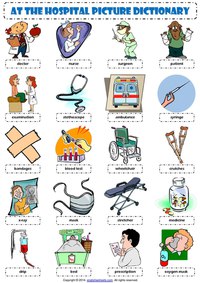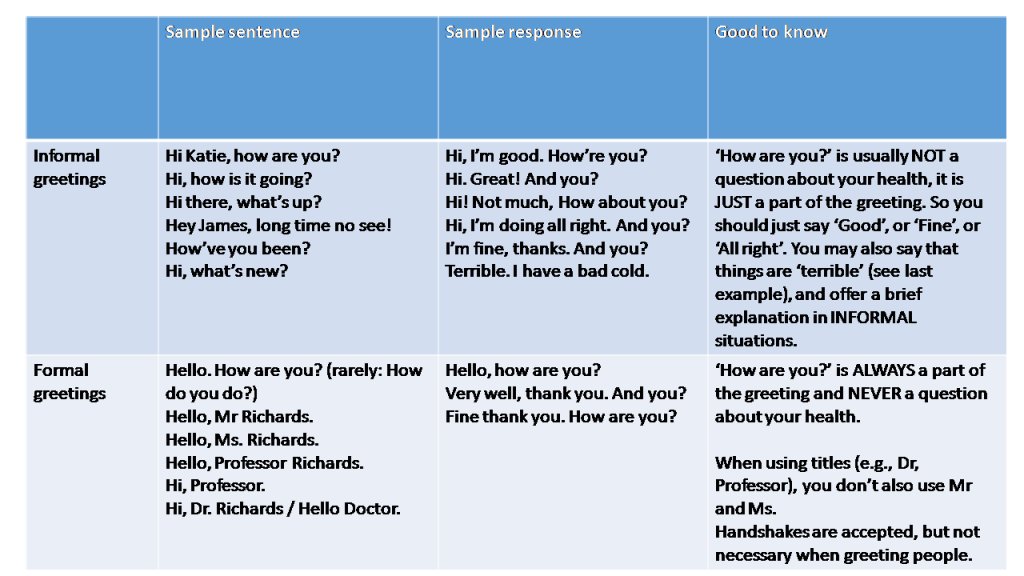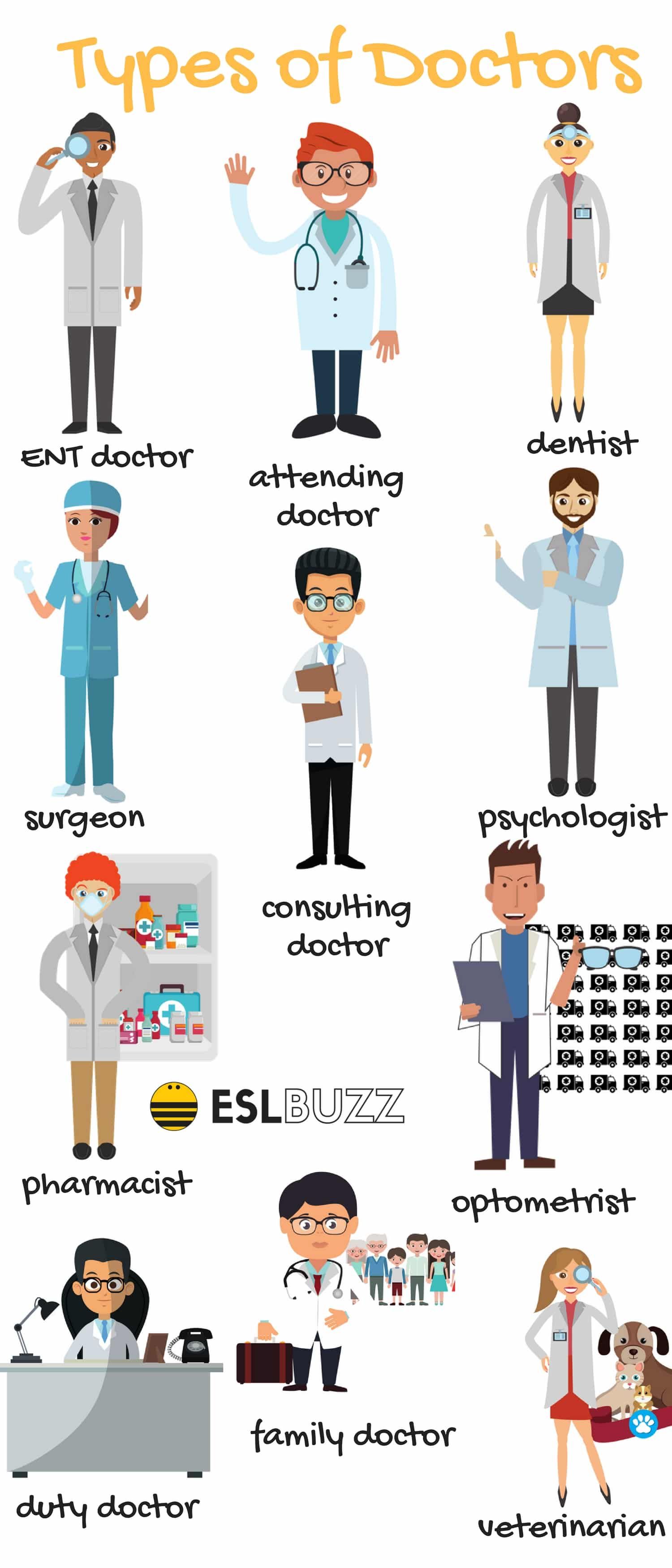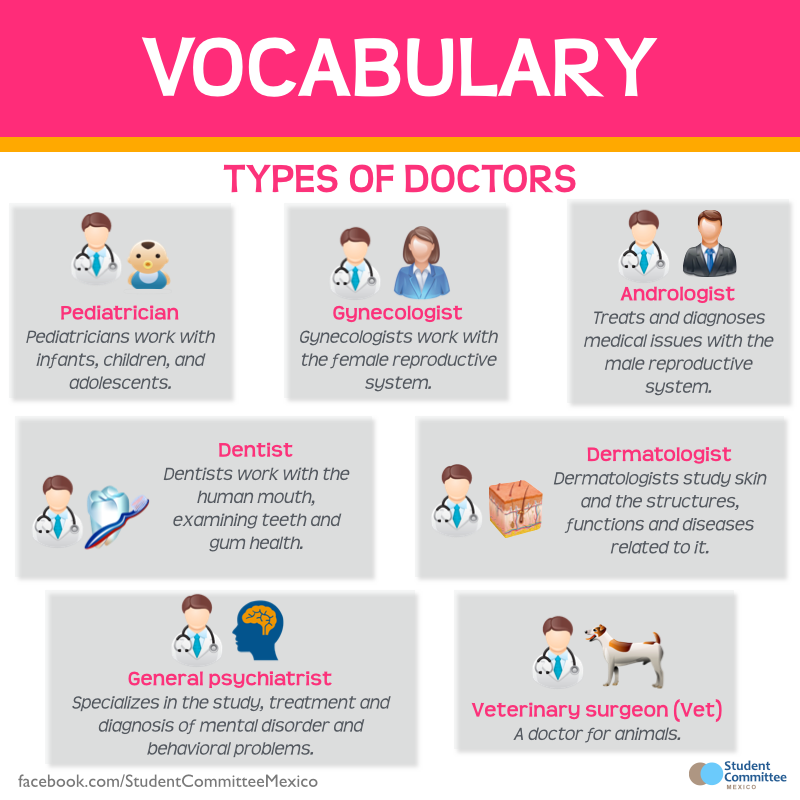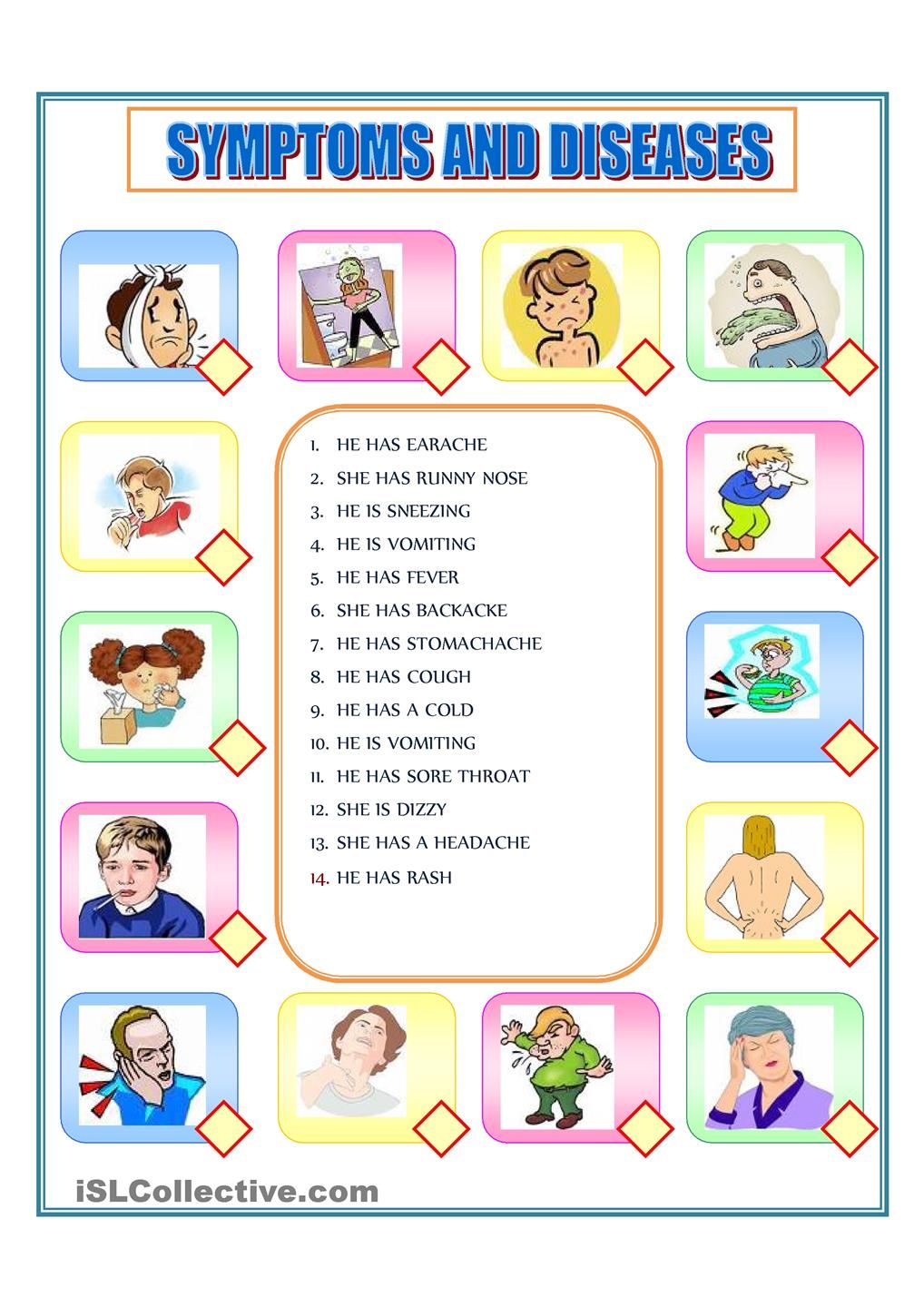
By
Last updated:
April 24, 2022
60+ Handy English Medical Vocabulary Terms for Sticky Situations
Doctors use some strange words.
You don’t need to be a doctor or have an expert medical vocabulary for day-to-day survival, but it’s still important to know basic English medical terms.
This guide will help teach you some of the basics, as well as some advanced concepts, too.
Contents
- Why Learn English Medical Vocabulary?
- Learn the Basics: Body Parts
- Common Medical Words to Help You at the Doctor or Hospital
- Learn Adjectives That Describe Systems and Areas of the Body
- Identify Different Types of Doctors
Download:
This blog post is available as a convenient and portable PDF that you
can take anywhere.
Click here to get a copy. (Download)
Why Learn English Medical Vocabulary?
It could save your life. It’s all about your health. These English medical vocabulary will help you know what kind of doctor to see.
But most importantly, you’ll be able to accurately describe your problem or condition, so the doctor will know how to treat you. You might need to know these terms even when you aren’t at the doctor’s office. If you know the right terms, you’ll be able to figure out what medicines or vitamins to take to keep you healthy.
Knowing medical terms can help in your career too! If you have an interest in medicine, but haven’t considered a job in the medical field, now is the time to do it. There are so many different jobs that can use folks with medical knowledge.
You could do medical writing, become a medical technician, a medical translator or (of course) a nurse or doctor. All of these jobs will require professional English and knowledge of certain vocabulary words.
People are always going to get sick, so the medical industry isn’t going away anytime soon. It’s a great field to enter if you want the security of knowing that your job will be around for a long time.
Lastly, if you simply love medical shows (like “Grey’s Anatomy”), learning medical words in English can help you better understand what the show is talking about!
Learn the Basics: Body Parts
Let’s begin with the most basic part of your health: the different body parts and organs. Believe it or not, it’s quite possible these words will come up in everyday conversations in English.
For example, if your friend asks you whether or not you’re feeling well, you can confidently reply, “My stomach hurts.” Or, if a coworker says they’ve been having heart problems, you’ll know exactly what they’re referring to.
- Skeleton — This refers to the bones your body is made up of, it’s the framework that supports your body.
- Brain — The most important organ in your body. It’s protected by your skull and controls all of your thoughts and movements.
- Heart — The other most important organ of the body. This is located in your chest and pumps blood throughout your body.
- Lungs — You have two lungs underneath your ribs. They help breathe in air and keep it in your body.
- Liver — Your liver is located on the right side of your body, beneath your lungs. It helps clean out bile (liquid that helps digestion) and other toxins in your body.
- Stomach — The stomach is located on the right side of your body, next to the liver. It’s where the food you eat gets digested.
- Small intestine — This organ is located underneath the stomach and absorbs nutrients and minerals from your digested food.
- Large intestine — From the small intestine, digested food travels to the large intestine, which helps furthers the digestion process and stores water.
Common Medical Words to Help You at the Doctor or Hospital
There’s a special medical term for almost everything, including certain body parts or conditions. Learn these to become more medical-savvy and also improve your fluency overall.
For example, if someone says, “My daughter’s arm was fractured during the game, so we took her to the hospital where they put a cast on it,” you’ll know exactly what they mean.
- Abdomen — A fancy way of referring to the area of the body that has your stomach and other digestive organs.
- Ambulance — This is a special kind of truck that brings patients to the hospital when they need help.
- Bandage — A strip of material used to cover or protect an injured part of the body.
- Bilateral — Something (like a disease or injury) that affects both sides of the body.
- Cancer — This is a condition where abnormal cells form and grow on or within the body. In many cases, it can disrupt your organs and other bodily functions.
- Cast — Have you ever broken your arm? A cast is a hard type of bandage that’s used to support and protect a broken bone.
- Colon — This is another name for the large intestine.
- Crutches — Two long sticks used to support someone who cannot properly walk because of a leg or foot injury.
- Diagnosis — When a doctor or specialist examines your symptoms and identifies an illness or other health problem.
- Emergency — This is when someone’s injury or illness is so bad or life-threatening that they need immediate medical attention.
- Extremity — The part of a limb (arm or leg) that is farthest from the torso. In other words, your hands and feet.
- Fever — This is when your body temperature is too high.
- Flu — This is short for influenza, which is a very contagious virus characterized by fever, body aches, congestion, coughs and more.
- Fracture — A fracture is a fancy way of saying a break or crack in someone’s bone.
- Hernia — A condition where part of an organ protrudes through the muscle that surrounds it.
- Incision — A cut made in someone’s skin or flesh during surgery.
- In-patient — A patient who stays at a hospital to get treated.
- Lesion — An area in an organ or tissue that has received damage from an injury or disease, such as a wound or tumor.
- Operation — This is another name for a surgery (see below) or a similar procedure.
- Organs — These are the parts of your body that perform vital functions needed to live, such as your heart, stomach, liver and so on.
- Out-patient — A patient that receives treatment outside of a hospital, like at a regular doctor’s office.
- Pain — We’ve all experienced this at some point in our lives. Pain is feeling uncomfortable because of a physical injury or illness.
- Physical — This word has two medical definitions. It could mean relating to the body (for example, “she felt physically weak”) or could it could mean a yearly medical examination by a doctor.
- Prosthesis — An artificial body part replacement.
- Scar — A mark left on the skin or body from an injury.
- Surgery — The treatment of internal injuries or disorders by cutting open the body and removing or repairing the damaged part.
- Syringe — This is another name for a needle. These are used to draw blood from someone or inject them with something, such as a vaccine (see below).
- Thermometer — A device used to take someone’s temperature to see if they have a fever.
- Tumor — This is related to cancer. It’s a swelling part of the body caused by abnormal cells.
- Vaccine — Do you get a flu vaccine every year? This is a substance that helps prevent a disease or virus.
- Vomit — A common phrase for this is “throw up.” It’s when you feel sick and expel the food that was in your stomach through your mouth.
- Wheelchair — A chair with wheels used by people who can’t walk.
- X-ray — An X-ray is when the doctor takes a picture of your bones to see if they’re broken, damaged or injured.
Learn Adjectives That Describe Systems and Areas of the Body
There are many different types of doctors, body parts and conditions that fall into different categories. Knowing these words would be helpful so you that can always know the area of the body being discussed. If you want to further practice these words, it can help to see them in use. Videos like the authentic ones on the FluentU language learning program can be a good way to see words in use by native English speakers. You can also make flashcards of each word, in this program or any of your favorite flashcard-making apps.
So if you hear someone say “cardiovascular,” you’ll understand they’re talking about something to do with the heart, blood vessels and blood. That being said, let’s go over this list of common medical adjectives.
- Cardiovascular — Having to do with your heart, blood vessels and blood.
- Coronary — Relating to the arteries that surround your heart and supply it with blood.
- Gastrointestinal — This is a fancy way to refer to body parts that relate to your stomach or intestine, including your esophagus, small and large intestines, pancreas, liver and gallbladder.
- Integument — This refers to your hair, nails and skin.
- Muscular — This term is pretty straight-forward. It means your muscles and tendons.
- Nervous System/Neurological — This adjective relates to your brain and other systems that control your body, like your spinal cord, nerves and sensory organs.
- Respiratory — These parts of your body help you breathe, such as your nose, pharynx, larynx, trachea, bronchi and lungs.
- Skeletal — Anything to do with your bones, skeleton and joints.
- Sensory — Do you notice the word “sense” in this word? It has to do with your five senses and their respective body parts, including your eyes, ears, nose, skin and mouth.
- Urinary — This term refers to body parts that control your urine, like the kidneys or bladder.
- Vascular — This word pertains to your blood vessels.
Identify Different Types of Doctors
Because there are so many weird medical terms, doctors in special fields have weird names too. Sometimes even fluent English speakers get confused about which doctor to see. For example, a doctor that treats foot or ankle conditions is called a “podiatrist,” which sounds nothing like “feet.”
Below is a list a of common doctors who treat different problems and diseases and have pretty odd names. Make sure to learn them so you’ll know what kind of doctor to see and get the right kind of advice.
- Allergist (immunologist) — Achoo! This is a doctor who treats allergies.
- Cardiologist — A doctor who treats hearts and heart disease.
- Dermatologist — If you have bad breakouts, you would need to see this kind of doctor, who specializes in skin.
- Gastroenterologist — This is a doctor who treats the stomach and digestive organs.
- Neonatologist — Many married couples visit these because this doctor cares for infants and babies.
- Neurologist — A doctor specializing in brain, spinal cord and nervous system diseases.
- Obstetrician — Expecting mothers visit this doctor because they treat pregnant women.
- Oncologist — A doctor who’s an expert in cancer.
- Ophthalmologist — When you need new prescription glasses, you visit this doctor because they specialize in the eyes.
- Otolaryngologist — An ear, nose and throat doctor.
- Pediatrician — A doctor who cares for young children.
- Podiatrist — A doctor who treats feet and ankle injuries or conditions.
- Psychiatrist — This is a doctor who treats mental illnesses and helps people with depression or similar problems.
- Pulmonologist — A doctor specializing in lungs.
- Rheumatologist — A doctor specializing in diseases of the joints, such as arthritis.
- Sports medicine specialist — If you get an injury while playing a sport or doing a physical activity, you would see this kind of doctor.
After reading this post, you should be prepared to choose the right kind of doctor and let them know about any medical conditions you have.
You’ll also be able to understand the information or advice they give you. Use this to your advantage to stay healthy and happy.
Download:
This blog post is available as a convenient and portable PDF that you
can take anywhere.
Click here to get a copy. (Download)
50 Smart Sounding Terms for Totally Common Things
When you’re under the weather and your doctor asks you to describe your symptoms, your response probably involves common descriptive words like “pain,” “swelling,” and “inflammation.” Medical experts and patients alike have come to accept this more banal phraseology as the norm. But what only practiced professionals know is that, beneath the veneer of Gray’s Anatomy and Scrubs scripts, much more official medical terminology comes into play. And yes, each and every word is about as painful to pronounce as it is to experience.
Herein, we’ve gathered some of the craziest medical terms—from the almost naughty-sounding formication to the how-can-a-word-seriously-be-that-long pneumonoultramicroscopicsilicovolcanoconiosis—for common conditions and symptoms. The next time you want to call a runny nose a “runny nose” or a brain freeze a “brain freeze,” stop yourself and use these highly official medical terms instead.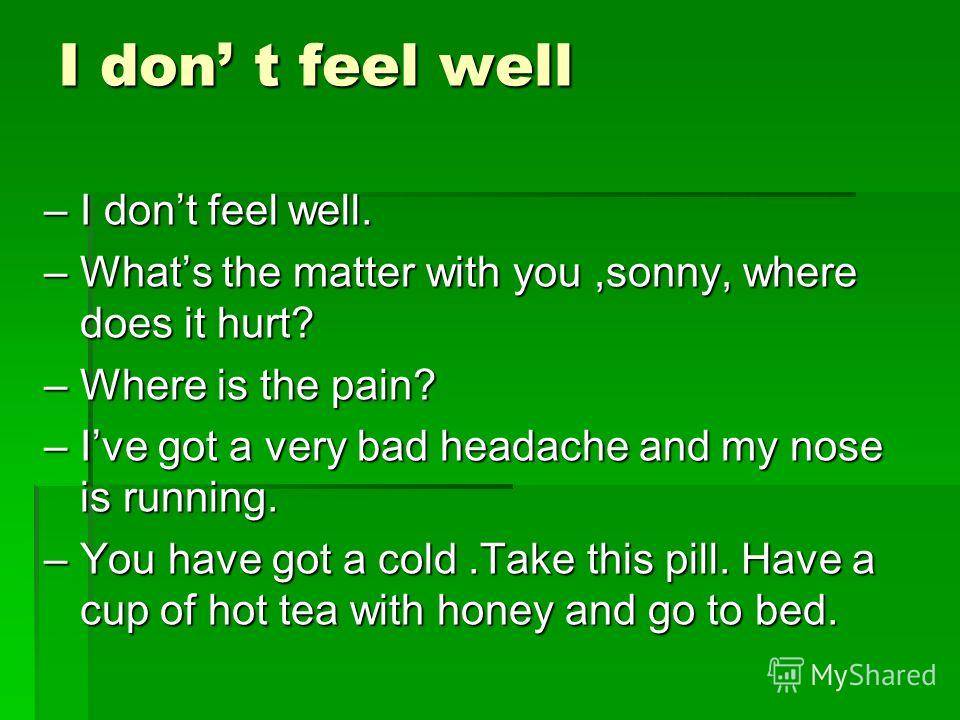
Have you ever crossed your legs for such a long period of time that, once you tried to get up, you found that they were completely numb? Most people refer to this sensation as having your limbs “fall asleep,” but the official medical term for it is actually obdormition.
Shutterstock
Believed to have been coined onomatopoetically by the Greeks, this scientific term refers to the noise that your stomach makes when it’s seriously in need of some fuel or struggling to digest something that doesn’t agree with it. And if you do find yourself with borborygmus, you can just tell your doctor in simpler terms that you’ve got a bad case of the stomach rumbles.
Don’t be alarmed if your dermatologist tells you that you’re suffering from xerosis. This is just the much scarier sounding scientific term for dry skin.
When you clean your ears out with a Q-tip, what you’re removing is the cerumen, or earwax.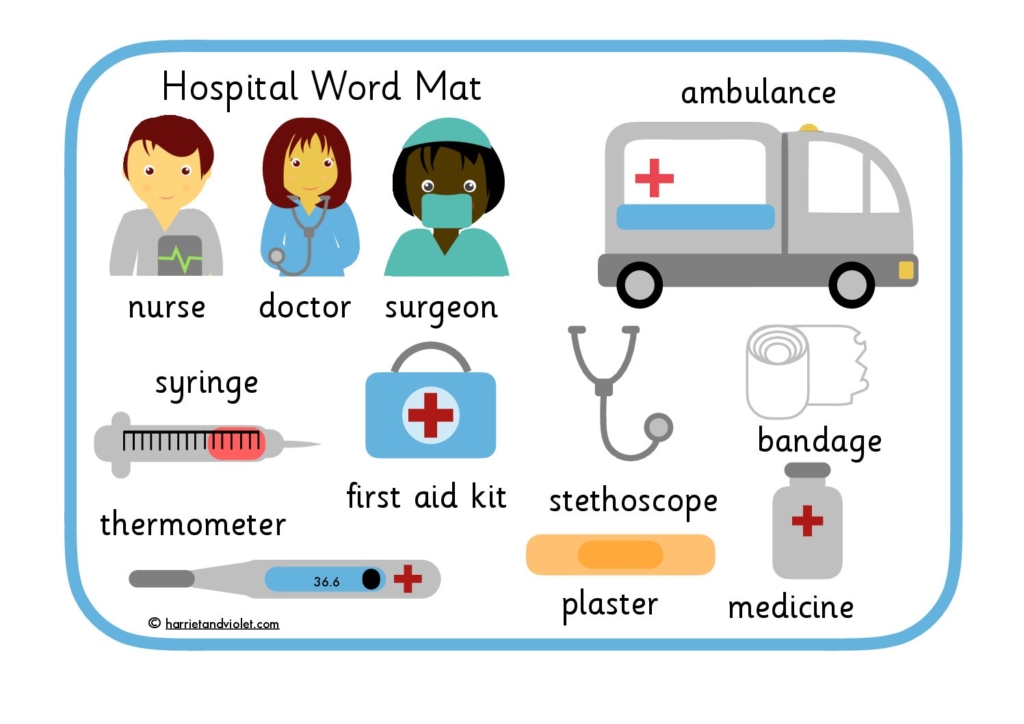
Shutterstock
If the brain freeze from your ice cream is a bad headache, then don’t try calling the pain by its official medical name—sphenopalatine ganglioneuralgia—or you’ll surely get a real headache.
Shutterstock
Nobody enjoys the sensation of biting down on their cheek, but some people just can’t help but do so over and over again. These folks suffer from morsicatio buccarum, a condition that forces them to repeatedly chew or bite down on the inside of their mouth, causing painful lesions.
After watching a romantic movie with a bittersweet ending, you might find your vision blurred by a few loose tears. In basic terminology, this would be called “crying.” But in the scientific community, this is referred to as lachrymation, or the excessive flow of tears.
Do your eyes hurt whenever you step outside? You might be suffering from photalgia, or a light-induced pain of the irises.
Epistaxis is the medical term for when blood pours out of your nose—in other words, what you may call a nosebleed.
Shutterstock
Though similar to epistaxis, pseudoepistaxis is slightly different in the sense that, when it occurs, the blood coming out of the nose doesn’t actually originate from the nasal cavity. Rather, the blood simply passes through and exits from the nasal cavity, so it merely looks like a normal nosebleed.
Proctalgia fugax is a pain in the butt—seriously: This medical term is the fancy way of referring to anal pain with no identifiable cause, typically identified by muscle spasms of the derriere.
Shutterstock
One of the most common side effects of taking medications is xerostomia, or dry mouth. And when a medication is known to cause dry mouth, it is appropriately referred to as xerogenic.
Shutterstock
“I think I’m getting pneumonoultramicroscopicsilicovolcanoconiosis, pop.” Okay, so maybe that’s not how the legendary Zoolander quote goes, exactly. But it should’ve been, seeing as this medical term is a synonym for silicosis, or the lung disease caused by inhaling silica dust: In other words, the black lung. And if you’re wondering why this word looks so farfetched, that’s because it was invented by the president of the National Puzzlers’ League as the longest word in the English language (at 45 letters).
People who suffer from bruxism, or teeth grinding, might experience symptoms like chipped teeth, tooth sensitivity, and trouble sleeping.
Shutterstock
You probably know them as goosebumps, but their official scientific name is actually horripilation, coming from the Latin words horrere (“to stand on end”) and pilus (“hair”). The word “horror” actually also stems from the Latin horrere—appropriately so, seeing as most freaky flicks will give you some intense horripilations.
Shutterstock
If and when your muscle fibers contract under your skin, you can be boring and say that you’re having a muscle twitch—or you can sound like a trained medical professional and remark on your fasciculation.
Though it doesn’t have the most pleasant sounding name, this condition is actually pretty common—and it’s more than likely you’ve dealt with it at least once over the past few months. Maybe you didn’t know it as rhinorrhea back then, but you definitely knew (and loathed) it by its more common name: a runny nose.
Ingrown nails are painful, but you know what would make them worse? Having to tell the doctor that you have onychocryptosis every single time you have one.
It might feel quite horrible in the moment, but getting the wind knocked out of you—or a transient diaphragmatic spasm—usually won’t last for more than a minute or two.
Shutterstock
There’s a reason we call those pesky, painful ulcers on our lips “canker sores,” given that the medical term for them—aphthous stomatitis—is no easy thing to pronounce.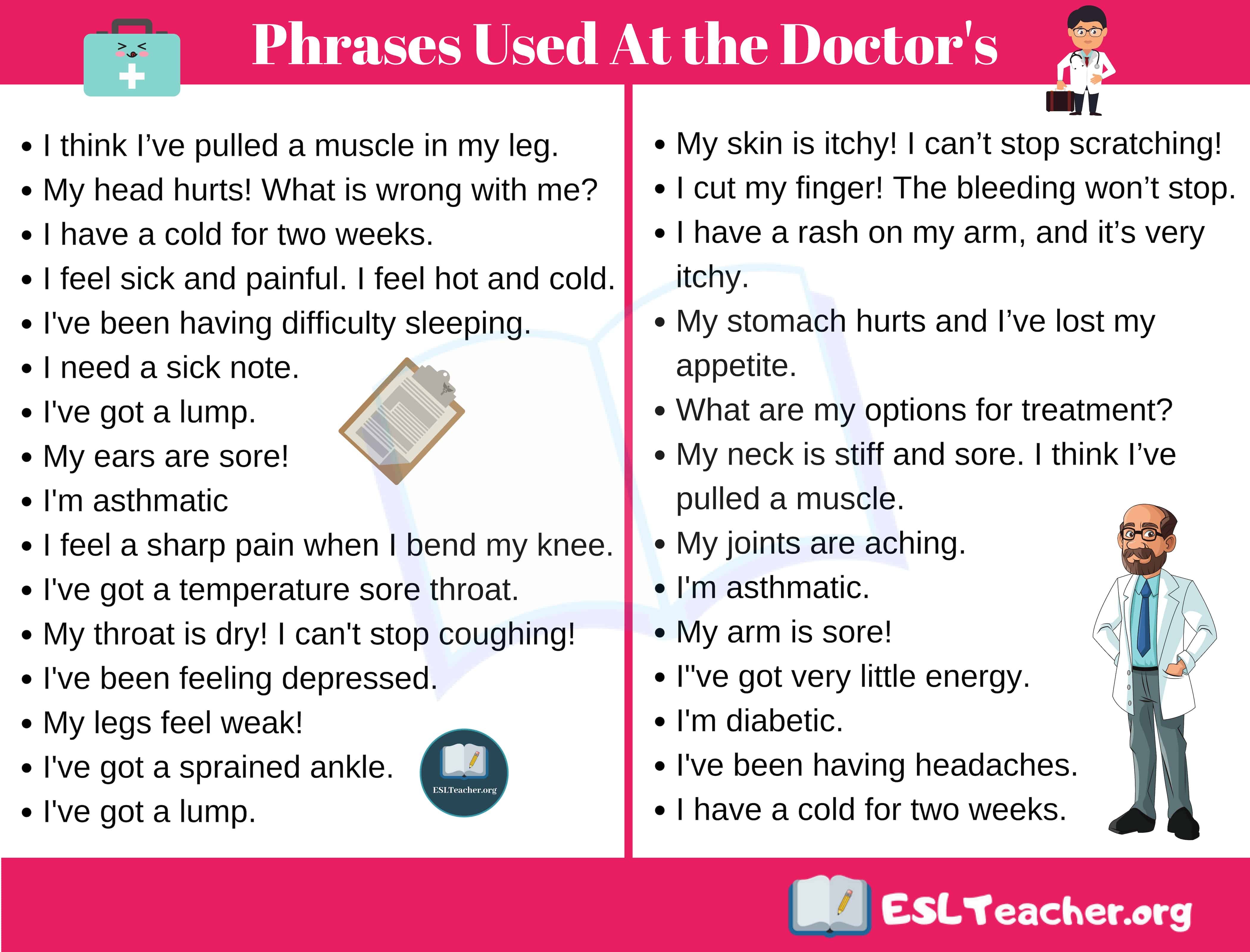
Shutterstock
This is just one of the medical terms referring to involuntary twitches in the diaphragm. Other terms that you might hear to refer to these are “myoclonic twitches” and, more simply, “hiccups.”
Shutterstock
No, not fornication—formication. This word with a one-letter difference refers to that creepy-crawly feeling you sometimes get, as if your skin is teeming with a bunch of tiny insects.
Shutterstock
You might not recognize the medical term cardialgia, but it’s probable you’ve experienced it after a particularly gluttonous meal. For some people, eating certain foods can cause indigestion, leading to cardialgia (more commonly known as heartburn).
Shutterstock
Generally, any stomach bug or food poisoning will be accompanied by an unpleasant wave of emesis, or nausea.
Shutterstock
When you’re dealing with rhinorrhea, you might find yourself sternutating—or sneezing—quite a bit.
A general runny nose is rhinorrhea, but a runny nose as a result of eating certain foods (like hot or spicy ones) is more specifically known as gustatory rhinitis. (Yes, you’ll find highly specific medical terminology for pretty much everything.)
Shin splints are neither fun nor impressive to have, seeing as simply having flat feet can cause the inflammation around the shinbone. However, if you do get stuck with shin splints, one way to impress your friends is by telling them that you have medial tibial stress syndrome. Sure, it might just be different names for the same thing, but they most likely won’t know that.
Pounding headache? Uneasy stomach? Unusual sensitivity to loud noises and bright lights? These are all classic symptoms of veisalgia, more commonly known as a hangover.
Shutterstock
Focus intently on something with your eyes, and you might find that you’re starting to see small transparent threads floating across your line of sight.
Has the mere sight of blood or even an overwhelming amount of anxiety ever caused you to pass out? If so, then you’re one of the many people who have experienced vasovagal syncope, which is really just a fancy way of saying that you’ve fainted.
Shutterstock
Never ignore angina. This chest pain—which has been described as feeling like a vise is squeezing on the chest area—is an indication that your heart isn’t getting enough blood, and it could be a symptom of a serious heart disease. And for ways to keep your heart healthy, load up on these 40 Heart Foods To Eat After 40.
Also known as the chickenpox, varicella is a highly contagious infection is most commonly seen in unvaccinated children.
You should head to the dentist soon if you’re suffering from any sort of odontalgia—or put more simply, from a toothache.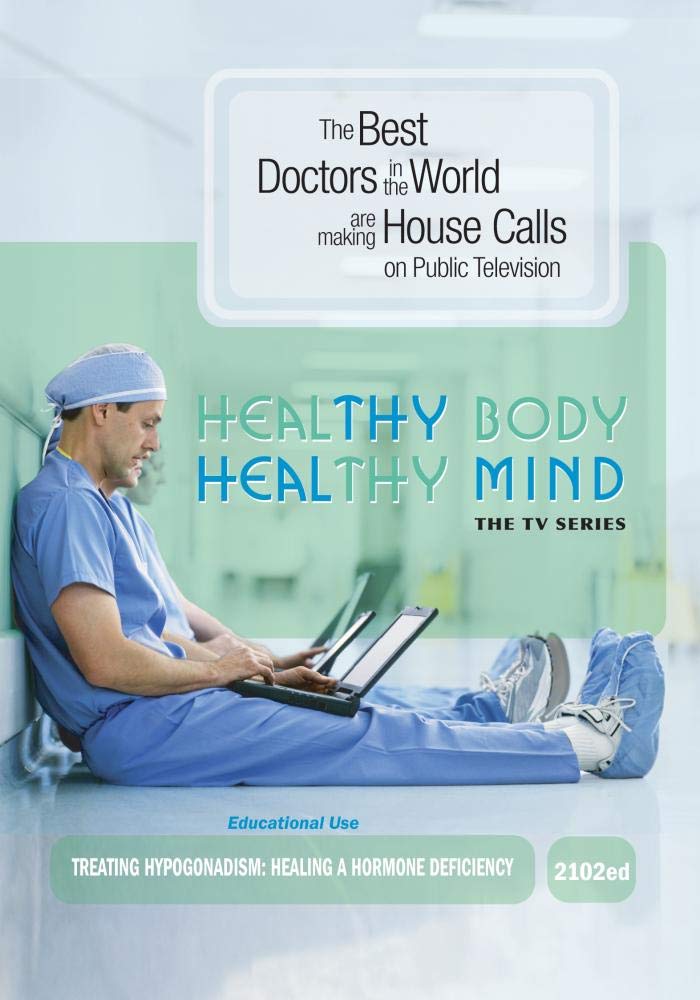
Shutterstock
When you’re dealing with pharyngitis, or a sore throat, your best course of action is to rest and relax in bed with a warm bowl of soup.
The change in cabin pressure on an airplane has been known to cause otalgia, or ear pain.
Shutterstock
Cachexia is the term used to describe the weight loss, muscle atrophy, and loss of appetite seen in patients with diseases like cancer, AIDS, multiple sclerosis, and congestive heart failure. Generally, when someone has cachexia, their chances of dying increase.
Shutterstock
Many medical conditions are accompanied by pyrexia, or a fever. Luckily, with a lot of water and some bedrest, pyrexia is generally easy to flush out.
People who have hyperhidrosis deal with a lot of sweat. In addition to perspiring at appropriate times, like at the gym or while tanning outside, they will also break out in a sweat in the dead of winter or even while at rest.
Make sure to always wear shoes that fit well. Otherwise, you risk coming home with feet covered in many a heloma molle, which is colloquially referred to as “soft corn.”
Shutterstock
Transient lingual papillitis causes small red or white bumps to develop on the tongue. Also known as lie bumps, these tend to clear up on their own within a few days, but that isn’t to say the process isn’t itchy and even painful.
Most kids struggle with nocturnal enuresis, or bedwetting, at some point during their adolescence, and it’s nothing to be ashamed of. Luckily, this habit is usually left behind in childhood with the temper tantrums and thumb-sucking.
Do your joints pop and lock when you drop it? What you’re hearing is crepitus, a popping and cracking sound in the joints due to air being in the subcutaneous tissue.
Shutterstock
When you’re dealing with dysuria, or painful urination, then every trip to the bathroom is about as dreaded as the dentist’s office.
Breaking new shoes in is never fun. After walking around for just a few hours, your feet run the risk of developing bursting bullas, or blisters.
Need an easy way to tell whether you’ve had too much to drink? Generally, you’ll know that it’s time to call it quits when you’re experiencing diplopia, or double vision.
Shutterstock
People who have pharyngitis often also suffer from dysphagia, or difficulty swallowing. Luckily, once the pharyngitis is treated, the dysphagia usually goes away, too.
Though having a chalazion on your eyelid isn’t fun, these styes tend to disappear on their own within a few weeks, causing no long-term damage.
This is what your dentist always warns you about.
Shutterstock
Is your vision blurrier than usual? You might need glasses, but it’s also possible that you’re suffering from keratitis, or inflammation of the cornea. Other symptoms associated with this condition include eye pain, redness, and excess discharge, and one way to prevent it is to make sure that you’re practicing proper contact lens care if you wear them.
When the fungus known as candida becomes too abundant in your mouth, it turns into a condition known as oral candidasis, or oral thrush. People who have oral candidasis will experience white lesions on the tongue and inner cheeks, but these will go away as soon as proper treatment is administered (usually anti-fungal medication).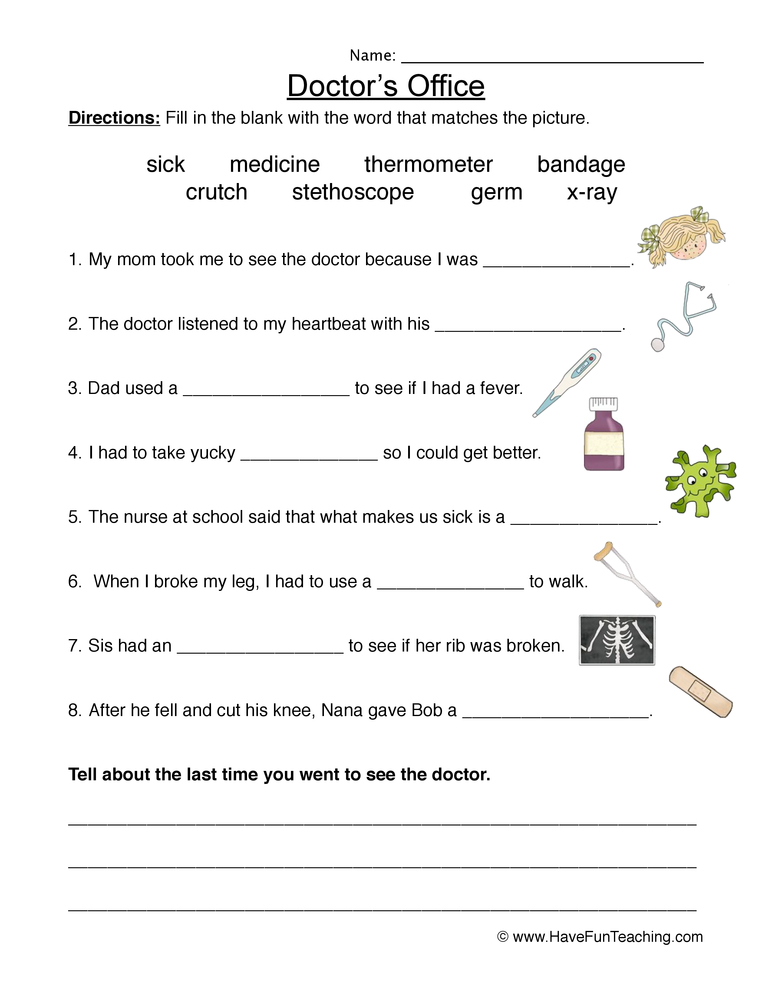
13 Confusing Words Your Doctor Uses, Decoded
There are more than five million outpatient clinic letters written every month across the NHS in England. Typically, patients are copied into letters sent between hospitals and GPs. But for those without a medical background, deciphering what’s written on each page can be hard-going.
This is precisely why hospital doctors are being encouraged to write directly to patients they see, to explain a diagnosis or test results in simplistic terms.
New guidance from the Academy of Medical Royal Colleges sets out a series of steps to make letters and emails less confusing for patients and easier to digest. One piece of advice is that doctors should write in “plain English” when penning letters to patients, rather than using confusing medical terms or Latin.
andrei_r via Getty Images
The initiative, which is supported by the Royal College of General Practitioners (RCGP), has been led by Dr Hugh Rayner, a kidney specialist who first started writing directly to patients in 2005.
“I’ve only ever had positive feedback from patients and GPs,” he said. “The change may seem small but it has a big effect.”
The guidance recommends several changes to make doctor and patient correspondence easier to digest, including:
:: Sentences should be shorter.
:: Use “plain English” where possible instead of medical jargon, Latin or complicated phrases. For example, “twice daily” instead of “bd”.
:: Explain what the results of tests mean. If they are upsetting, phone the patient instead.
:: Use images instead of words where possible. For example, charts, graphs or diagrams.
:: If the patient has a visual impairment, ask if large print would help.
:: For children and young people, include information that is appropriate for their age.
:: Use the second and first person pronouns rather than writing in the third person and use active rather than passive verbs.
:: Avoid words that are open to misinterpretation. Chronic is often taken to mean ‘really bad’ rather than ‘long-standing’, which is the medical definition.
A translation of medical jargon into plain English, according to The Academy of Medical Royal Colleges:
1. Dyspnoea = breathlessness
2. Oedema = swelling or fluid
3. Seizure = fit
4. Syncope = faint
5. Acute = sudden or short-term
6. Chronic = long-term or persistent
7. Cerebral = brain
8. Coronary = heart
9. Hepatic = liver
10. Pulmonary = lung
11. Renal = kidney
12. Paediatric = children’s
13. Atrial fibrillation = irregular pulse.
In response to the glossary of terms above, Ley Sander, medical director at Epilepsy Society and professor of neurology at University College London, disputed using the term ‘seizure’ rather than ‘fit’.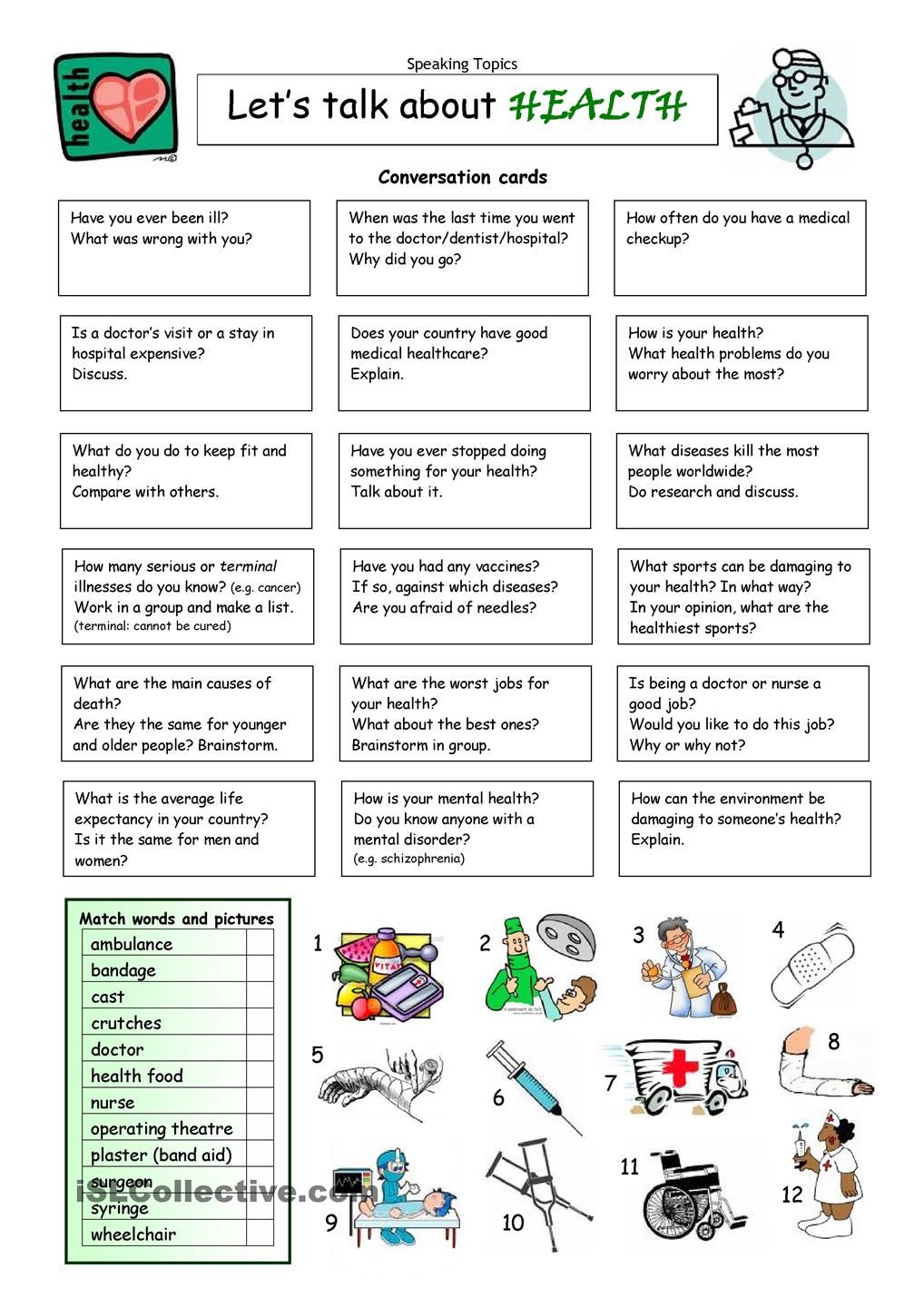
“The term ‘seizure’ rather than ‘fit’ does not class as medical jargon in describing epileptic seizures,” Sander told HuffPost UK.
“Some years ago people with epilepsy were asked in a national survey what their preferred terminology was for describing their epilepsy. People were adamant that ‘seizure’ was more preferable to the word ‘fit’ which carried much stigma with it and in some contexts was used as a derogatory term.”
Peter Rees, Chair of the Academy of Medical Royal Colleges’ Patient Committee said people should push for this guidance to be adopted at their local hospitals.
Handy English Medical Vocabulary Words You Need to Know
Doctors use some strange words.
Synchronous diaphragmatic flutter?
Sternutate?
Borborygmus?
Yep, these are real words.
And they refer to hiccups (synchronous diaphragmatic flutter), sneezes (sternutate) and stomach growls (borborygmus).
Can you believe that? It seems that even the simplest medical issues have complicated, difficult names.
You don’t need to be a doctor or have an expert medical vocabulary for day-to-day survival, but it’s still important to know basic English medical terms.
The words in this article will help you articulate (explain) to others any medical issues you may be having. It will also help you understand medical professionals when they’re speaking to you.
Don’t worry. Even native English speakers sometimes have trouble with medical vocabulary. There are some really crazy medical words out there.
What’s also crazy is the amount of awesomeness you’ll find on FluentU.
FluentU takes real-world videos—like music videos, movie trailers, news and inspiring talks—and turns them into personalized language learning lessons.
Use FluentU to improve your medical vocabulary and for any other language needs you might have.
And now, back to Medical English.
This guide will help teach you some of the basics, as well as some advanced concepts too.
You’ll be completely prepared for your next trip to the doctor’s office!
Download:
This blog post is available as a convenient and portable PDF that you
can take anywhere.
Click here to get a copy. (Download)
Why Learn English Medical Vocabulary?
It could save your life. It’s all about your health. These English medical vocabulary will help you know what kind of doctor to see.
But most importantly, you’ll be able to accurately describe your problem or condition, so the doctor will know how to treat you. You might need to know these terms even when you aren’t at the doctor’s office. If you know the right terms, you’ll be able to figure out what medicines or vitamins to take to keep you healthy.
Knowing medical terms can help in your career too! If you have an interest in medicine, but haven’t considered a job in the medical field, now is the time to do it. There are so many different jobs that can use folks with medical knowledge.
You could do medical writing, become a medical technician, a medical translator or (of course) a nurse or doctor. All of these jobs will require professional English and knowledge of certain vocabulary words.
People are always going to get sick, so the medical industry isn’t going away anytime soon. It’s a great field to enter if you want the security of knowing that your job will be around for a long time.
Lastly, if you simply love medical shows (like “Grey’s Anatomy”), learning medical words in English can help you better understand what the show is talking about!
Learn the Basics: Body Parts
Let’s begin with the most basic part of your health: the different body parts and organs. Believe it or not, it’s quite possible these words will come up in everyday conversations in English.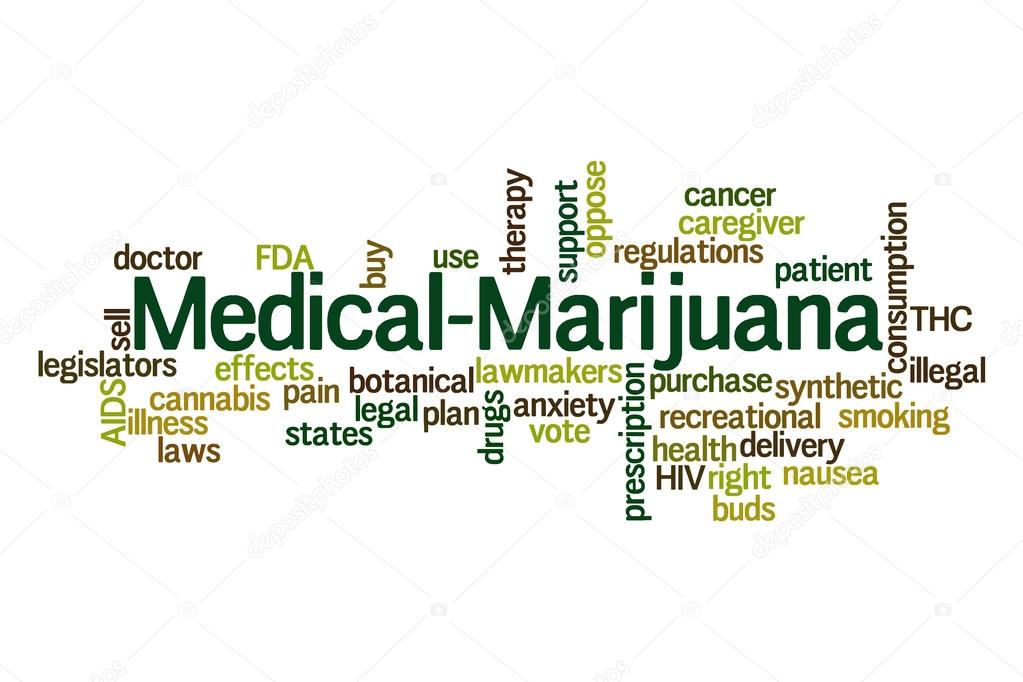
For example, if your friend asks you whether or not you’re feeling well, you can confidently reply, “My stomach hurts.” Or, if a coworker says they’ve been having heart problems, you’ll know exactly what they’re referring to.
- Skeleton — This refers to the bones your body is made up of, it’s the framework that supports your body.
- Brain — The most important organ in your body. It’s protected by your skull and controls all of your thoughts and movements.
- Heart — The other most important organ of the body. This is located in your chest and pumps blood throughout your body.
- Lungs — You have two lungs underneath your ribs. They help breathe in air and keep it in your body.
- Liver — Your liver is located on the right side of your body, beneath your lungs. It helps clean out bile (liquid that helps digestion) and other toxins in your body.
- Stomach — The stomach is located on the right side of your body, next to the liver. It’s where the food you eat gets digested.
- Small intestine — This organ is located underneath the stomach and absorbs nutrients and minerals from your digested food.
- Large intestine — From the small intestine, digested food travels to the large intestine, which helps furthers the digestion process and stores water.
Common Medical Words to Help You at the Doctor or Hospital
There’s a special medical term for almost everything, including certain body parts or conditions. Learn these to become more medical-savvy and also improve your fluency overall.
For example, if someone says, “My daughter’s arm was fractured during the game, so we took her to the hospital where they put a cast on it,” you’ll know exactly what they mean.
- Abdomen — A fancy way of referring to the area of the body that has your stomach and other digestive organs.
- Ambulance — This is a special kind of truck that brings patients to the hospital when they need help.
- Bandage — A strip of material used to cover or protect an injured part of the body.
- Bilateral — Something (like a disease or injury) that affects both sides of the body.
- Cancer — This is a condition where abnormal cells form and grow on or within the body. In many cases, it can disrupt your organs and other bodily functions.
- Cast — Have you ever broken your arm? A cast is a hard type of bandage that’s used to support and protect a broken bone.
- Colon — This is another name for the large intestine.
- Crutches — Two long sticks used to support someone who cannot properly walk because of a leg or foot injury.
- Diagnosis — When a doctor or specialist examines your symptoms and identifies an illness or other health problem.
- Emergency — This is when someone’s injury or illness is so bad or life-threatening that they need immediate medical attention.
- Extremity — The part of a limb (arm or leg) that is farthest from the torso. In other words, your hands and feet.
- Fever — This is when your body temperature is too high.
- Flu — This is short for influenza, which is a very contagious virus characterized by fever, body aches, congestion, coughs and more.
- Fracture — A fracture is a fancy way of saying a break or crack in someone’s bone.
- Hernia — A condition where part of an organ protrudes through the muscle that surrounds it.
- Incision — A cut made in someone’s skin or flesh during surgery.
- In-patient — A patient who stays at a hospital to get treated.
- Lesion — An area in an organ or tissue that has received damage from an injury or disease, such as a wound or tumor.
- Operation — This is another name for a surgery (see below) or a similar procedure.
- Organs — These are the parts of your body that perform vital functions needed to live, such as your heart, stomach, liver and so on.
- Out-patient — A patient that receives treatment outside of a hospital, like at a regular doctor’s office.
- Pain — We’ve all experienced this at some point in our lives. Pain is feeling uncomfortable because of a physical injury or illness.
- Physical — This word has two medical definitions. It could mean relating to the body (for example, “she felt physically weak”) or could it could mean a yearly medical examination by a doctor.
- Prosthesis — An artificial body part replacement.
- Scar — A mark left on the skin or body from an injury.
- Surgery — The treatment of internal injuries or disorders by cutting open the body and removing or repairing the damaged part.
- Syringe — This is another name for a needle. These are used to draw blood from someone or inject them with something, such as a vaccine (see below).
- Thermometer — A device used to take someone’s temperature to see if they have a fever.
- Tumor — This is related to cancer. It’s a swelling part of the body caused by abnormal cells.
- Vaccine — Do you get a flu vaccine every year? This is a substance that helps prevent a disease or virus.
- Vomit — A common phrase for this is “throw up.” It’s when you feel sick and expel the food that was in your stomach through your mouth.
- Wheelchair — A chair with wheels used by people who can’t walk.
- X-ray — An X-ray is when the doctor takes a picture of your bones to see if they’re broken, damaged or injured.
Learn Adjectives That Describe Systems and Areas of the Body
There are many different types of doctors, body parts and conditions that fall into different categories. Knowing these words would be helpful so you that can always know the area of the body being discussed.
So if you hear someone say “cardiovascular,” you’ll understand they’re talking about something to do with the heart, blood vessels and blood. That being said, let’s go over this list of common medical adjectives.
- Cardiovascular — Having to do with your heart, blood vessels and blood.
- Coronary — Relating to the arteries that surround your heart and supply it with blood.
- Gastrointestinal — This is a fancy way to refer to body parts that relate to your stomach or intestine, including your esophagus, small and large intestines, pancreas, liver and gallbladder.
- Integument — This refers to your hair, nails and skin.
- Muscular — This term is pretty straight-forward. It means your muscles and tendons.
- Nervous System/Neurological — This adjective relates to your brain and other systems that control your body, like your spinal cord, nerves and sensory organs.
- Respiratory — These parts of your body help you breathe, such as your nose, pharynx, larynx, trachea, bronchi and lungs.
- Skeletal — Anything to do with your bones, skeleton and joints.
- Sensory — Do you notice the word “sense” in this word? It has to do with your five senses and their respective body parts, including your eyes, ears, nose, skin and mouth.
- Urinary — This term refers to body parts that control your urine, like the kidneys or bladder.
- Vascular — This word pertains to your blood vessels.
Identify Different Types of Doctors
Because there are so many weird medical terms, doctors in special fields have weird names too. Sometimes even fluent English speakers get confused about which doctor to see. For example, a doctor that treats foot or ankle conditions is called a “podiatrist,” which sounds nothing like “feet.”
Below is a list a of common doctors who treat different problems and diseases and have pretty odd names. Make sure to learn them so you’ll know what kind of doctor to see and get the right kind of advice.
- Allergist (immunologist) — Achoo! This is a doctor who treats allergies.
- Cardiologist — A doctor who treats hearts and heart disease.
- Dermatologist — If you have bad breakouts, you would need to see this kind of doctor, who specializes in skin.
- Gastroenterologist — This is a doctor who treats the stomach and digestive organs.
- Neonatologist — Many married couples visit these because this doctor cares for infants and babies.
- Neurologist — A doctor specializing in brain, spinal cord and nervous system diseases.
- Obstetrician — Expecting mothers visit this doctor because they treat pregnant women.
- Oncologist — A doctor who’s an expert in cancer.
- Ophthalmologist — When you need new prescription glasses, you visit this doctor because they specialize in the eyes.
- Otolaryngologist — An ear, nose and throat doctor.
- Pediatrician — A doctor who cares for young children.
- Podiatrist — A doctor who treats feet and ankle injuries or conditions.
- Psychiatrist — This is a doctor who treats mental illnesses and helps people with depression or similar problems.
- Pulmonologist — A doctor specializing in lungs.
- Rheumatologist — A doctor specializing in diseases of the joints, such as arthritis.
- Sports medicine specialist — If you get an injury while playing a sport or doing a physical activity, you would see this kind of doctor.
After reading this post, you should be prepared to choose the right kind of doctor and let them know about any medical conditions you have.
You’ll also be able to understand the information or advice they give you. Use this to your advantage to stay healthy and happy.
Download:
This blog post is available as a convenient and portable PDF that you
can take anywhere.
Click here to get a copy. (Download)
And One More Thing…
If you like learning English through movies and online media, you should also check out FluentU.
If you want to watch it, the FluentU app has probably got it.
The FluentU app and website makes it really easy to watch English videos. There are captions that are interactive. That means you can tap on any word to see an image, definition, and useful examples.
FluentU lets you learn engaging content with world famous celebrities.
For example, when you tap on the word “searching,” you see this:
FluentU lets you tap to look up any word.
Learn all the vocabulary in any video with quizzes. Swipe left or right to see more examples for the word you’re learning.
FluentU helps you learn fast with useful questions and multiple examples. Learn more.
The best part? FluentU remembers the vocabulary that you’re learning. It gives you extra practice with difficult words—and reminds you when it’s time to review what you’ve learned.
Start using FluentU on the website with your computer or tablet or, better yet, download the FluentU app from the iTunes or from the Google Play store.
If you liked this post, something tells me that you’ll love FluentU, the best way to learn English with real-world videos.
Experience English immersion online!
Doctors must avoid jargon when talking to patients, royal college says
Doctors should speak slowly and avoid using jargon with their patients, the Royal College of General Practitioners (RCGP) has said.1
A report by the college said that doctors often used words that were unfamiliar to patients or that patients did not fully understand. “Doctors may use familiar words in unfamiliar ways,” it said.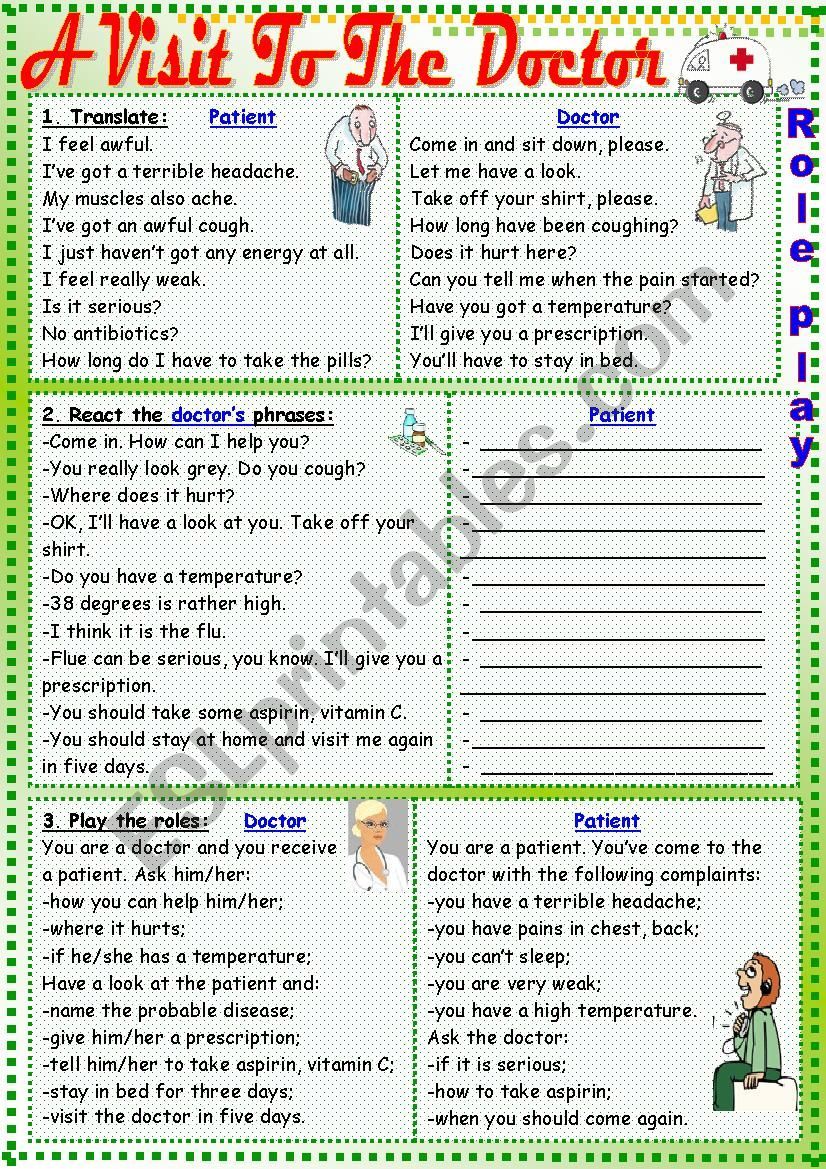
The report said, “Doctors can unintentionally use words that are unfamiliar to their patients, without realising that the meaning is not clear. Some concepts familiar and obvious to doctors may be alien to patients.” The RCGP said that doctors should speak slowly, avoid jargon, and repeat points to help improve patients’ understanding. “Doctors should first establish what the patient knows and understands before launching into a discussion that begins at a level either too complex or too simple for the patient,” the report added.
Research led by Gillian Rowlands of Kings College London that was highlighted in the RCGP report found that 43% of England’s working age population struggled to understand health information that contained only text. The patients who faced the most difficulties were “older people, black and ethnic minority groups, those with low qualifications, those without English as a first language, those with low job status and those in the poverty trap,” the research found.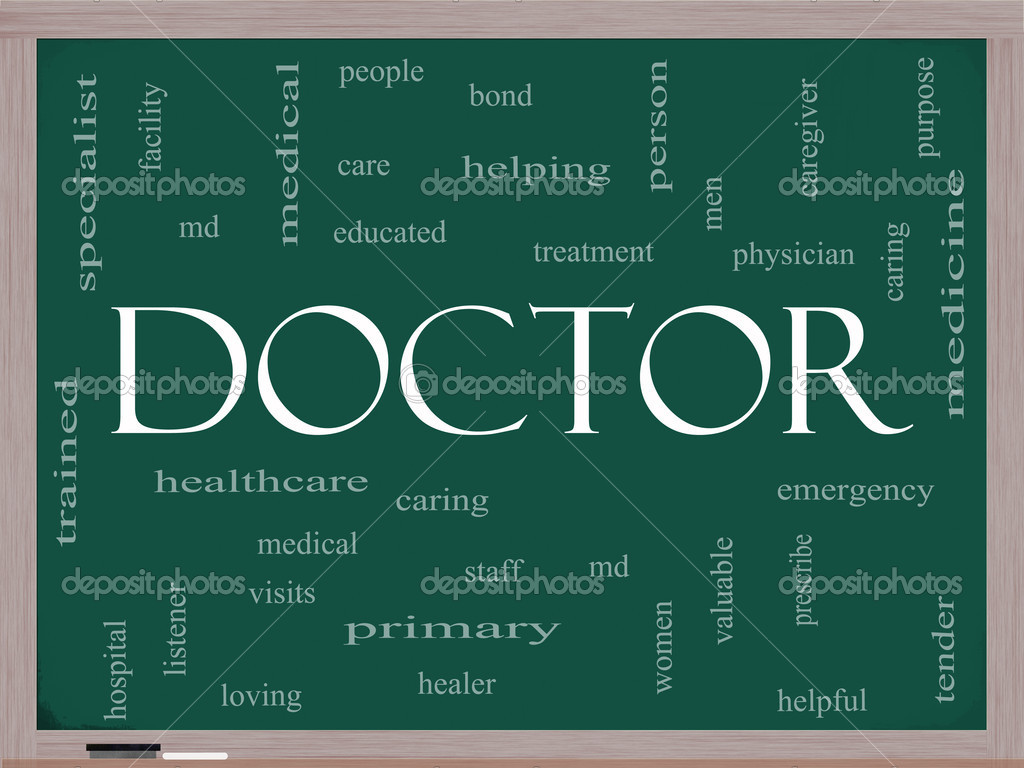
The report said that poor skills in understanding and using health information could leave patients at a higher risk of emergency admission to hospital and of serious health conditions. One GP, the report noted, said that a patient who had been referred for a chest x ray did not have it done, having failed to find the department because its sign read “Radiology” and he was too embarrassed to ask for help.
Commenting on the report, Maureen Baker, chairwoman of the RCGP, said, “Too often, our healthcare environments fail to recognise the needs of people with different levels of understanding about their health, meaning that patients are failing to receive the right care at the right time.”
She added, “We know that low health literacy affects all areas of health and healthcare, which is why we want to encourage GPs and the wider NHS to ensure that they are communicating complex information in a clear and manageable way. We look forward to working with NHS England to help shape a health system that is truly accessible to all.
Two powerful words that more doctors should use
Sticks and stones may break my bones but two words — thank you — will not hurt you but will certainly help you.
We, myself included, are often so busy and always in a hurry rushing from one task to another that we often forget common courtesies. I believe that we can accomplish so much more with our patients, our staff, and even in our personal lives by not forgetting to make good use of those magic words, thank you.
Relationships with our patients and our staff are the cornerstone of a successful practice. Common wisdom dictates sending referring physicians a note regarding the patient they sent you as a way of communicating your opinion. It is also common to send a gift at holiday time to colleagues and friends who have been helpful to you and your practice throughout the year. I believe it is important to express your appreciation not just in the month of December but all year round.
Here are a few suggestions based on a few principles that allow you to say thank you to your patients, your staff, colleagues, family and friends all the time so that your appreciation is noted and that you don’t take for granted how nice others have been to you and your practice.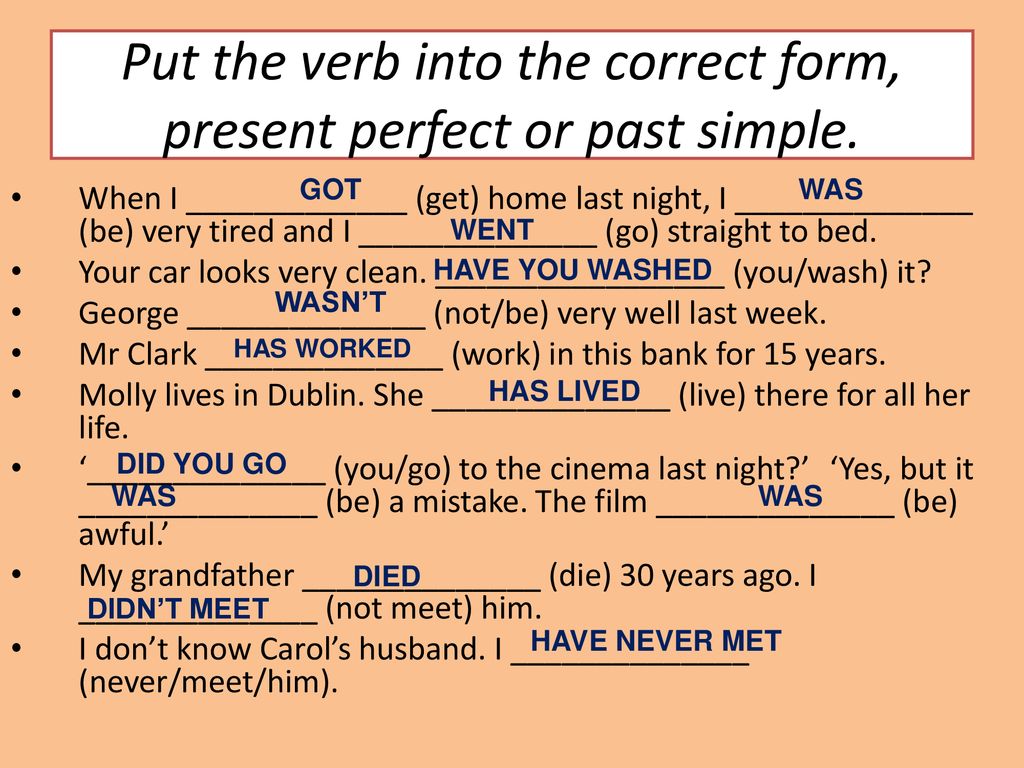
Thank yous are most appreciated when they are least expected. We have a policy in our office that when a pharmaceutical company or a vendor brings the doctors and the staff a lunch that everyone in the office who had the lunch sends a thank you note to the sponsor of the luncheon. I have heard on multiple occasions that our office is the only office that acknowledges the lunch and that the representatives from pharma are so impressed that our staff is so thankful for the meal.
Thank patients who take the time to complain. It is not easy for a patient to register a complaint with a doctor. If the practice receives such a complaint, it is imperative to follow up and let the patient know that action has been taken to resolve the problem. This also applies to your online reputation and physician grading sites on the Internet. If a negative comment appears on a grading site, acknowledge the complaint and without using the comments name or anything that could identify the patient let them know that you appreciate their comment and that you are taking action so that it doesn’t happen again.
I think that a thank you that is handwritten is more meaningful than via email. Recipients of your thank you note recognize that it takes a little extra effort to write a note and mail it than to send it via email. I use a thanks a million check to write my thanks to a patient, an employee, or friend. I have gone to their desks or their offices and note the recipient will often tape my thank you note prominently as a lasting reminder of my graciousness.
It takes only a minute or two to say thank you. Don’t miss out on this opportunity to acknowledge those who have been helpful and nice to you. It will make their day. And yours as well.
Neil Baum is a urologist and author of Marketing Your Clinical Practices: Ethically, Effectively, Economically. He can be reached at his self-titled site, Neil Baum, MD, or on Facebook and Twitter.
Image credit: Shutterstock.com
Terms Doctors Use & What They Mean
During their education, doctors learn “medical jargon.” This refers to words and phrases that are useful when communicating with other medical professionals but may be very confusing to patients.
The best doctors are careful not to overwhelm their patients with medical jargon, and instead try to use simple language when explaining things (unless the patient has a lot of knowledge about medicine). They will also encourage patients to ask questions. Talking to your doctor should feel like a conversation and not a lecture in a language you have never studied!
Unfortunately, many doctors put less effort into how they explain things to patients, and many patients are hesitant to ask for clarification.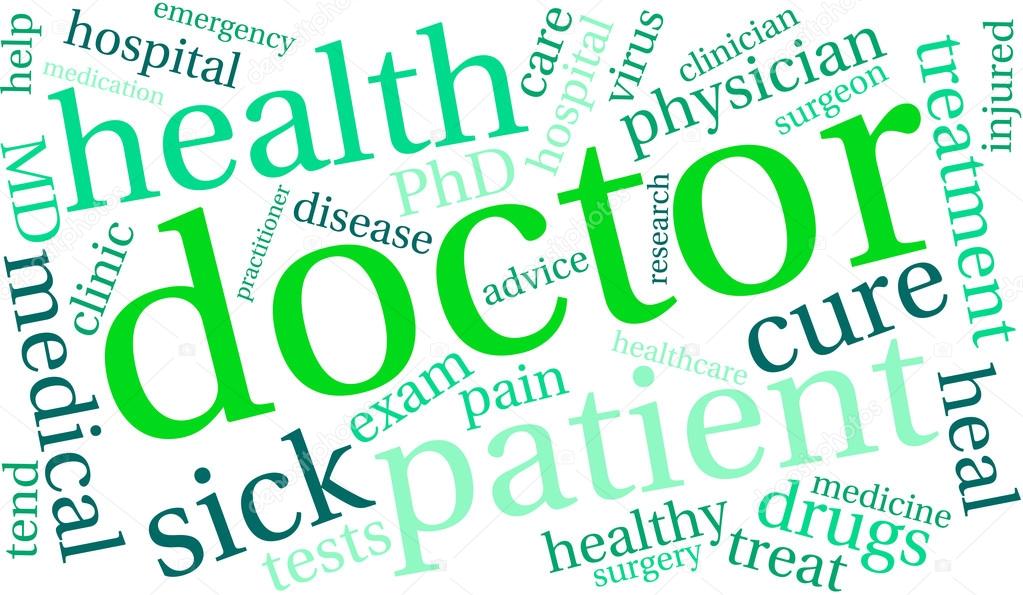
However, some patients also try to learn a bit of jargon, so that they can more easily follow conversations between doctors. Learning medical terms can also help with reading medical information in books or on websites. Here, we’ll define common terms used when talking about pregnancy. Check back for more posts defining jargon related to other topics in maternal-infant health!
Medical Jargon in Pregnancy Health
Amniocentesis: This is a prenatal test in which a small amount of fluid is taken out of the amniotic sac for analysis.
Amniotic sac: The amniotic sac is inside of the uterus, and is sort of like a bubble that protects the growing baby. It is filled with a liquid called amniotic fluid. The amniotic sac ruptures shortly before a baby is born, and the amniotic fluid comes out of the mother’s vagina.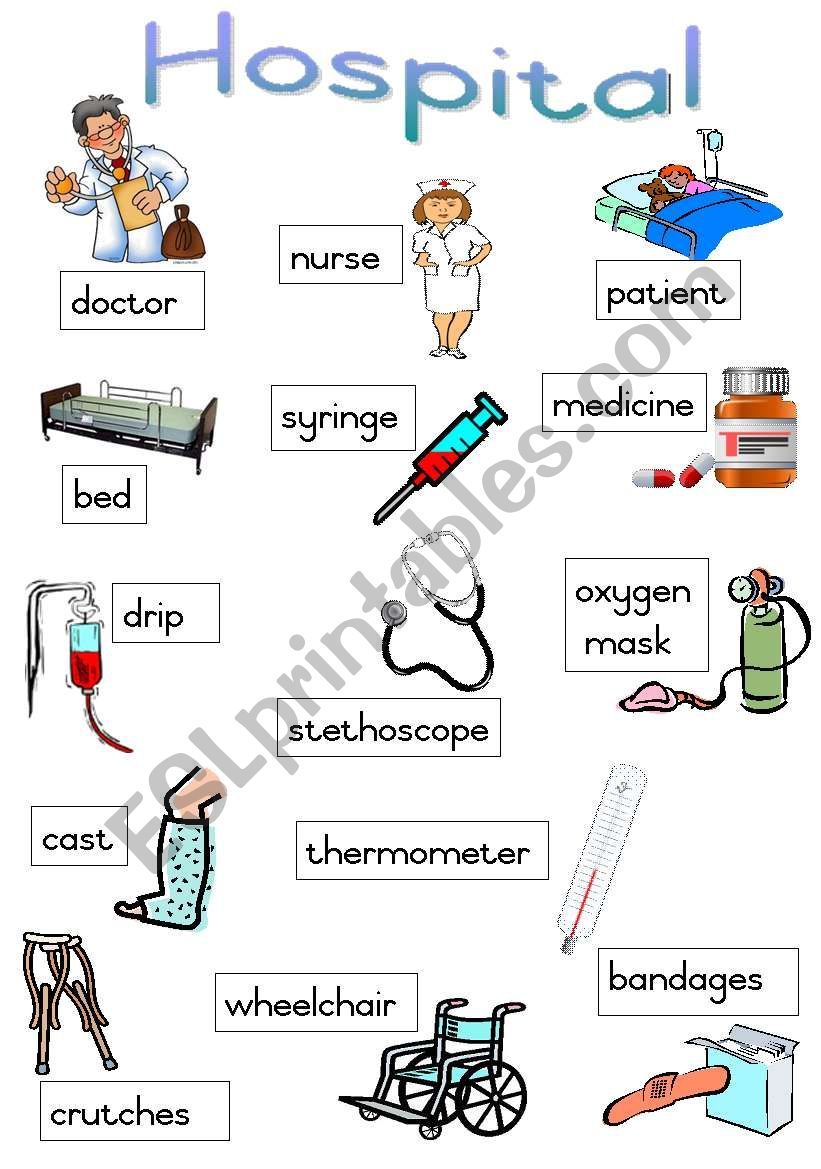
Birth canal: The birth canal includes several parts of the mother’s body, through which a baby must pass during vaginal birth. It includes the uterus/womb, cervix, vagina, and vulva.
Braxton Hicks Contractions: Braxton Hicks contractions are also called “false labor.” They occur when the uterus tightens briefly, basically as practice for actual labor. Braxton Hicks contractions most commonly occur late in pregnancy (in the third trimester). If a woman is unsure whether she is having real contractions or Braxton Hicks contractions, she should talk to a doctor for more information.
Cervix: The cervix is the lowest part of the uterus, which connects to the vagina. Babies must pass through the cervix in order to be born vaginally.
Cesarean section (C-section): A Cesarean section is a surgery in which doctors make a cut into the mother’s abdomen and deliver the baby that way.
Conception: Conception is the moment when a woman becomes pregnant.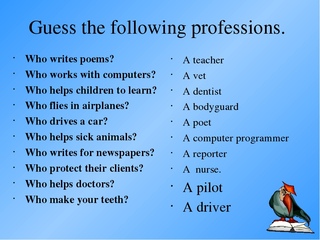
Due date: A woman’s “due date” is when her baby is expected to be born. Doctors can estimate a due date using the date of conception and/or the date of a woman’s last period, or by doing an ultrasound.
Eclampsia: Eclampsia is a pregnancy condition in which a woman’s high blood pressure (see preeclampsia) leads to problems such as convulsions (shaking), coma, and even death. It must be treated very quickly.
Embryo: An embryo is a baby in the very early phase of development when it still looks like a clumping of cells or a fish-like creature.
Epidural: A type of anesthesia (a medication to decrease feeling) that can relieve pain during childbirth.
Fallopian tubes: A pair of tubes from which a woman’s eggs travel from the ovaries (where eggs are produced) into the uterus (where babies grow during pregnancy).
Fetus: A fetus is the term used for a developing baby from after the 8th week of pregnancy until birth.
Full-term birth: Exact definitions for full-term birth vary, but it is when a baby is born close to 40 weeks of pregnancy. Sometimes, doctors may talk about “early-term birth” and “late-term birth,” which have more specific definitions.
Gestation: Gestation is just another word for pregnancy.
Maternal hemorrhage: A maternal hemorrhage is heavy bleeding from the vagina when a woman is pregnant, giving birth, or has recently given birth. A hemorrhage can be a very serious medical problem, and must be treated quickly.
Induction of labor: This is when a doctor begins labor artificially, either by giving the mother drugs (for example Pitocin) or by breaking the amniotic sac (an amniotomy). There are risks associated with labor induction, so it should only be done when necessary.
In-utero: In-utero simply means “inside the uterus.” Another term for the uterus is the “womb.”
In-vitro fertilization (IVF): In-vitro fertilization is a way that a woman can become pregnant without having sexual intercourse with a man (sometimes, women also have in-vitro fertilization because they are unable to become pregnant through sex, or because their partner has fertility problems). “In-vitro” means “in glass” and “fertilization” means that a sperm joins with an egg. During IVF, sperm and eggs are taken out of the parents, combined in a glass container, and then put into the mother’s uterus.
Labor: When a woman goes into labor, that means her body is getting ready to give birth.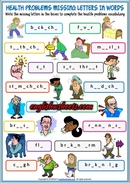
Miscarriage: A miscarriage is when an embryo or fetus dies before it would be able to survive outside of the mother’s uterus (womb). Most doctors say it is a miscarriage if the death happens before 20 weeks of pregnancy.
Multiples pregnancy: A multiples pregnancy is when a woman is pregnant with twins, triplets, or more.
Obstetrician: A doctor who specializes in caring for pregnant women and their babies.
Placenta: The placenta is an organ inside of the uterus, which supplies nourishment (food) to the growing baby. The placenta and the baby are connected to each other by the umbilical cord.
Postterm pregnancy: A postterm pregnancy is when a baby has not yet been born after 42 weeks of pregnancy. This is often dangerous for mothers and babies, so doctors may recommend that a mother have her labor induced or that her baby be born via Cesarean section if her pregnancy is getting close to postterm.
Preeclampsia: Preeclampsia is a pregnancy complication in which the mother’s blood pressure becomes dangerously high. Sometimes (especially if not properly treated) it progresses to eclampsia, which is a medical emergency.
Premature birth: A premature birth, also known as preterm birth, is when a baby is born before 37 weeks of pregnancy. If they can, doctors will try to prevent premature births, because premature babies (also known as “preemies”) are at high risk for a lot of medical problems since their organs and immune systems are not done developing.
Prenatal: Prenatal means ‘before birth’. Other words with the same meaning include antenatal and antepartum. Doctors often talk about prenatal tests, which are tests performed during pregnancy to check the health of the mother and/or baby.
Presentation: When doctors mention a baby’s presentation, they are talking about the way that a baby is positioned inside of the uterus (womb).
Rupture of membranes: The term “rupture of membranes” is more often known as a woman’s “water breaking.” It occurs just before birth, when fluid rushes out of the vagina. That fluid is not actually water, it is amniotic fluid. During pregnancy, the baby grows in amniotic fluid inside of the amniotic sac. After the amniotic sac breaks, the fluid rushes out and the baby can be born.
Stillbirth: A stillbirth is when a fetus dies after approximately 20 weeks of pregnancy (exact definitions vary).
Trimesters: In pregnancy, there are three trimesters. The first trimester is approximately the first three months of pregnancy. Pregnancy symptoms, including morning sickness (nausea and vomiting), exhaustion, and headaches, are common in the first trimester.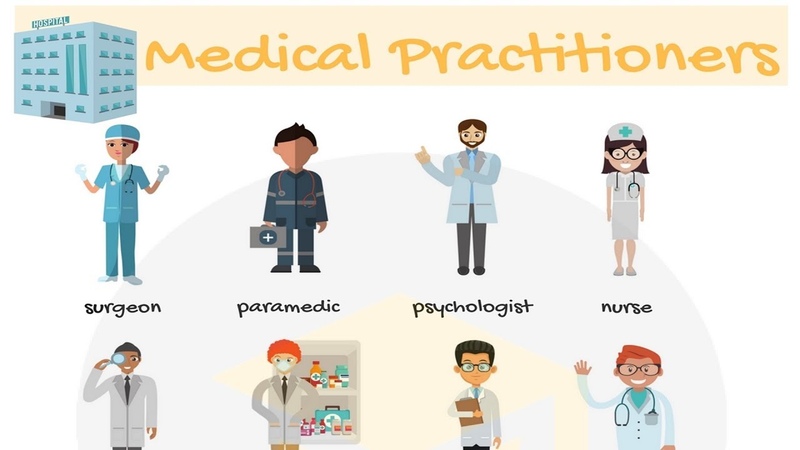
Ultrasound: An ultrasound is a type of test that uses sound waves to show pictures of your baby inside the uterus (womb). It can help doctors see how the baby is developing, and can also help to determine whether the baby is a boy or a girl.
Umbilical cord: The umbilical cord connects the growing baby to the placenta. It is sort of like a pipe that can carry nutrients (food) and oxygen to the baby, and can also remove the baby’s waste products.
Uterine contractions: Uterine contractions, sometimes just called “contractions,” happen when muscles in a woman’s uterus tighten and shorten.
About ABC Law Centers
ABC Law Centers was established to focus exclusively on birth injury cases. A “birth injury” is any type of harm to a baby that occurs just before, during, or after birth. This includes issues such as oxygen deprivation, infection, and trauma. While some children with birth injuries make a complete recovery, others develop disabilities such as cerebral palsy and epilepsy.
If a birth injury/subsequent disability could have been prevented with proper care, then it constitutes medical malpractice. Settlements from birth injury cases can cover the costs of lifelong treatment, care, and other crucial resources.
If you believe you may have a birth injury case for your child, please contact us today to learn more. We are happy to talk to you free of any obligation or charge. In fact, clients pay nothing throughout the entire legal process unless we win.
Free Case Review | Available 24/7 | No Fee Until We Win
Phone (toll-free): 866-323-2960
Press the Live Chat button on your browser
Complete Our Online Contact Form
Share This Post
Doctors told to dispense with confusing medical jargon | Doctors
Doctors have been told to speak more slowly and use less jargon when talking to patients because their explanations of illnesses and treatments are too often confusing.
A report by the Royal College of GPs (RCGP) urges the UK’s 250,000 medics to avoid the use of words such as “chronic”, “palliative” and “hospice”, and warns that describing a diagnosis of cancer as “positive” can be misinterpreted as good news.
“Doctors, having spent many years immersed in the biology of human health and disease, may overestimate the health literacy of their patients,” says the report.
Doctors may fail to realise that they have failed to make themselves understood to the patient and should check they have done so by asking the patient to repeat the information back to them if they are unsure, it recommends. Equally, some patients are too embarrassed to ask doctors questions they want answered because they do not want to reveal their lack of understanding of what they have been told or their poor reading skills.
It cites the word “chronic” as an example of where “doctors can unintentionally use words that are unfamiliar to their patients, without realising that the meaning is not clear.
Previous research in 2012 found that between 15 million and 21 million people in England lack what is called health literacy – the ability to understand what health professionals say or what information leaflets advise and then to act on it. That can involve a patient struggling to comprehend the contents or significance of a letter they receive after visiting a hospital clinic, for example.
Research by the RCGP found that one patient told that tests had confirmed a “positive” diagnosis of cancer wrongly assumed that meant it was good news. A man told to go for a chest X-ray did not have one because he did that know that he should go to the “diagnostics” department and was too embarrassed to ask hospital staff for directions.
In a separate piece of work, a team led by Dr Gill Rowlands, a health literacy expert at London South Bank University, found that almost half the population would fail to understand 65 different patient information leaflets found in GPs’ surgeries and hospital wards on subjects such as healthy lifestyles and why women should have smear tests for cervical cancer.
As many as 43% of people may not understand key information such as correct doses of medicines or a blood pressure reading because of a widespread failure to understand words or numbers.
Patients’ failure to comprehend what the doctor has said or what they have read is important because it can stop people understanding the diagnosis they have just received and also lead to treatment errors, such as misunderstanding or not spotting warnings about medication on an information leaflet inside their box of tablets, the report warns.
Dr Maureen Baker, chair of the RCGP, said: “We owe it to patients to make sure that they are as informed as possible about their own health or condition, but medicine is a complex area with lots of complicated terminology. Wherever possible, doctors should explain and demystify the more difficult terms, for instance, using the word ‘x-ray’ or ‘scan’ instead of ‘diagnostics’ can make a real difference in helping the patient feel at ease and more comfortable about asking questions.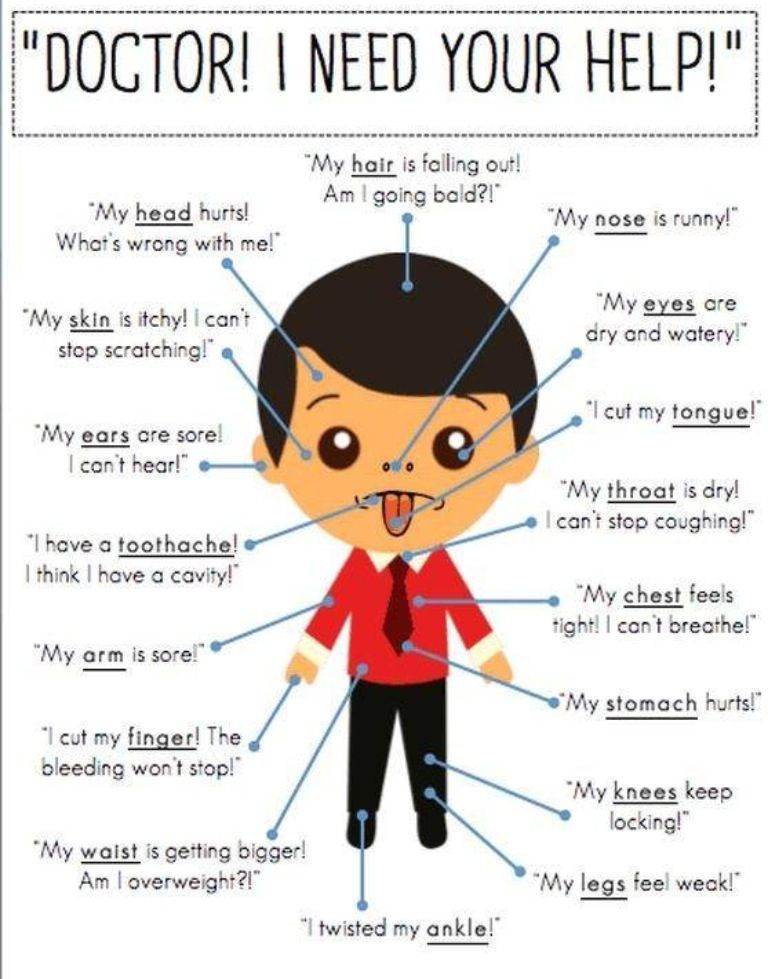
Don Redding, policy director at National Voices, an umbrella group representing scores of charities, said GP appointments were often too short for patients to understand what they had been told and then take a major decision about what form of treatment, if any, to have, given the risks and possible side-effects involved.
GP consultation times needed to be extended or patients offered one or two advice sessions with a nurse instead to ensure that they understood fully the implications of treatment on offer before they decided whether to accept or not, he said. He also urged the NHS to embrace “patient decision aids”, packages of information used in America to help patients to decide what to do.
“Patients when facing key decisions about their treatment can’t do this in seven-minute GP consultations,” Redding said.
National Voices had also come across examples of patients at the end of their lives who were offered “palliative” care or a place in a “hospice”, but did not understand what either involved.
Joyce Robins, co-director of the patient group Patient Concern, said: “There is a real shortage of doctors, and that means consultations can be rushed.
“Doctors must explain carefully the implications of conditions to patients, but often there is just not time for this.
“It would help if leaflets were also a bit clearer. There is a huge range of material offered to patients at the moment. I think the solution is to design a standard set of clear, concise leaflets for every condition, so no one can fail to understand what they are being told.”
The health minister Dan Poulter, who works part-time as an NHS obstetrician, urged fellow medics to use plain English more often. “As a doctor I know how important it is to speak to patients clearly. Patients need to understand what they are being told and have simple information about their treatment and medicines.
90,000 Medical slang. Whom doctors call skiers, violinists and platypuses
“We came to the sword swallower with a disco and played war”.
This phrase will seem to you nonsense, but doctors will easily understand it. It means: an ambulance with a siren on came to a person who swallowed an object, after which he became ill. He could not walk himself, so he had to be carried on a stretcher. But the paramedic was alone, without a partner, and in order to carry the patient to the car, he had to wake up the neighbors and ask for help.
Medical workers have their own slang. It is needed in order to relieve tension during very stressful work and to transfer information to each other faster.
This is what they might call you if you go to the hospital
A skier is an elderly patient who walks down the corridor with a stick, shuffling his slippers.
Porcupine is a patient in the acupuncture room.
Polosach, or violinist – a patient after a demonstrative suicide attempt, he has characteristic cuts on his hands.
Canned food – patients of the surgical department who have decided to be treated conservatively, that is, without surgery.
Splatters – a patient with a foreign body in the gastrointestinal tract.
A disturbed grandmother is an elderly patient with acute cerebrovascular accident.
Foreign medical slang is based on similar principles.
For example, Betty is a diabetic (spelled like diabetic).
Patients who behave badly (whine, complain about everything in the world, make unfair demands, swear) are called gomer.There is a version that this is an acronym for the phrase “Get Out of My Emergency Room” (“Get out of my receiver”).
For themselves and their colleagues, doctors also came up with slang names
Anesthesiologists are anesthesiologists.
Chickens – urologists.
Platypuses are students who are undergoing internship. They are instructed, among other things, to carry out ducks for bedridden patients.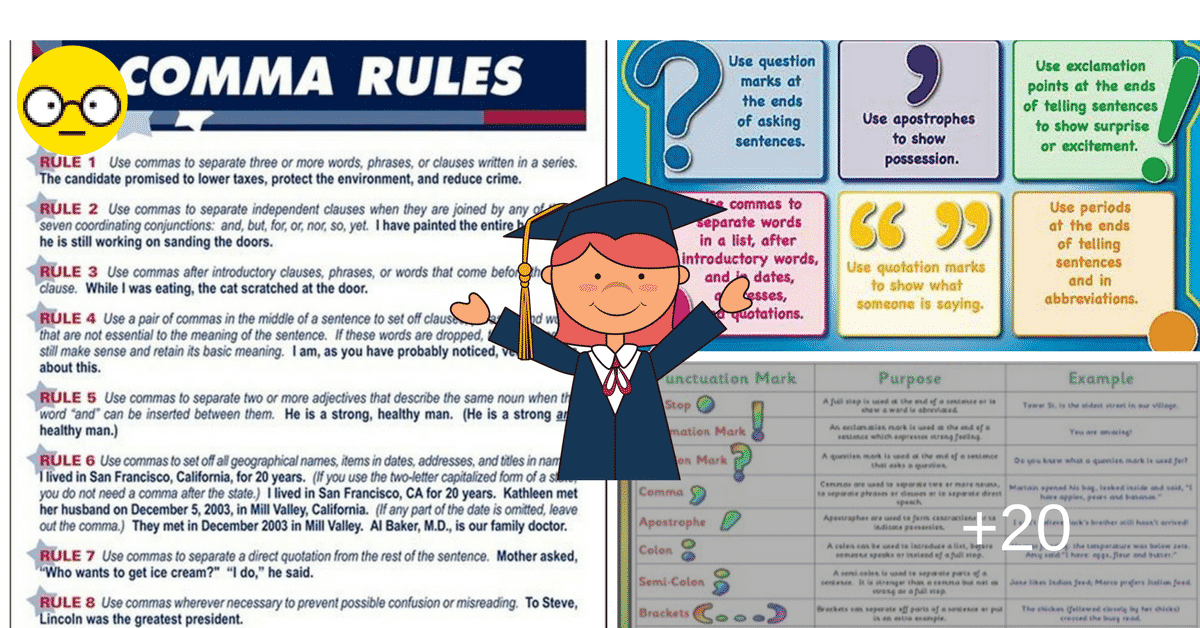
Foreign example: English-speaking doctors call a urologist a plumber.
A lot of humor in slang that describes the process of work
Call Chip and Dale – the ambulance team calls for the rescuers of the Ministry of Emergency Situations for reinforcement.
Play war – a paramedic or an ambulance doctor wakes up the patient’s neighbors at three o’clock in the morning to help pull the stretcher.
TV series “Friends” – an ambulance team, having gone to the call, looks at another patient in the next apartment.
Negroes are neighbors helping to carry the patient.
Disco – the siren and flashing lights are on at the ambulance.
In English: digging for worms – removal of varicose veins.
Have slang for death
Many physicians avoid the word “died”. Instead, the patient is said to be “gone.”
Instead of “corpse” they say “body”. When it comes to a hopeless patient, they say that he must be “released” (this means – not to prevent his death).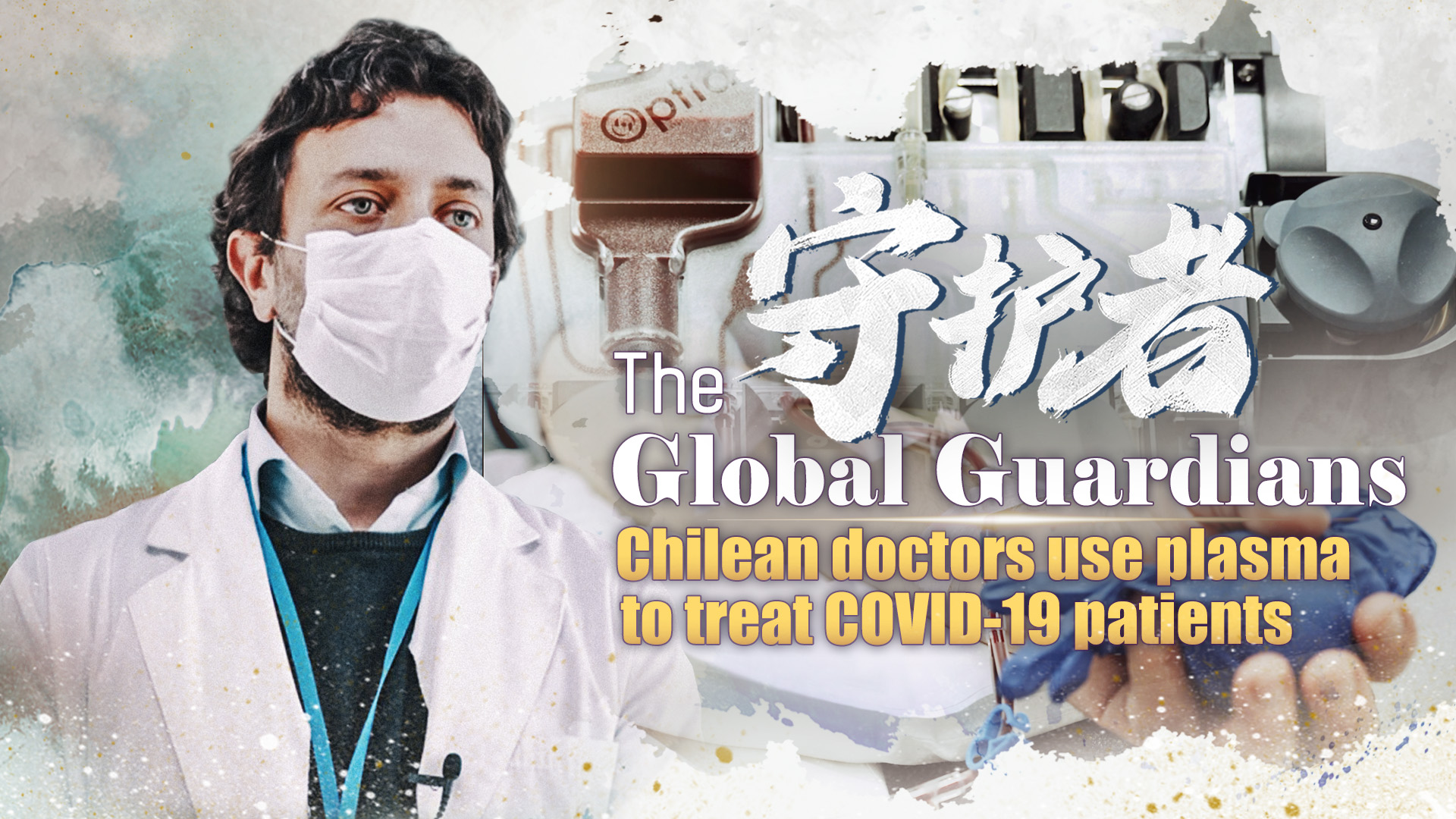
And the same thing is done by doctors abroad. In English they say that the patient is “gone to… “(left).
– The work is hard, the stress is constant, and slang, humor is needed, probably, first of all for emotional relaxation, – says the paramedic of the ambulance Dmitry Belyakov. – Why don’t they say the words “died”? This is also the reaction of doctors to their own stresses. Behind all this cynicism is the fact that doctors are really experiencing a huge psychological stress.
“Now doctors of all directions use slang,” says therapist Konstantin Ivanov. – Each specialty has its own.The older generation of doctors may not know slang. They try to use more academic language. Although slang has always been, it was not so common before.
At the same time, many doctors believe that it is shameful to speak in slang.
“I am a very educated person, I speak in a good, literary language,” said Leonid Aronov, chief physician of the city hospital No.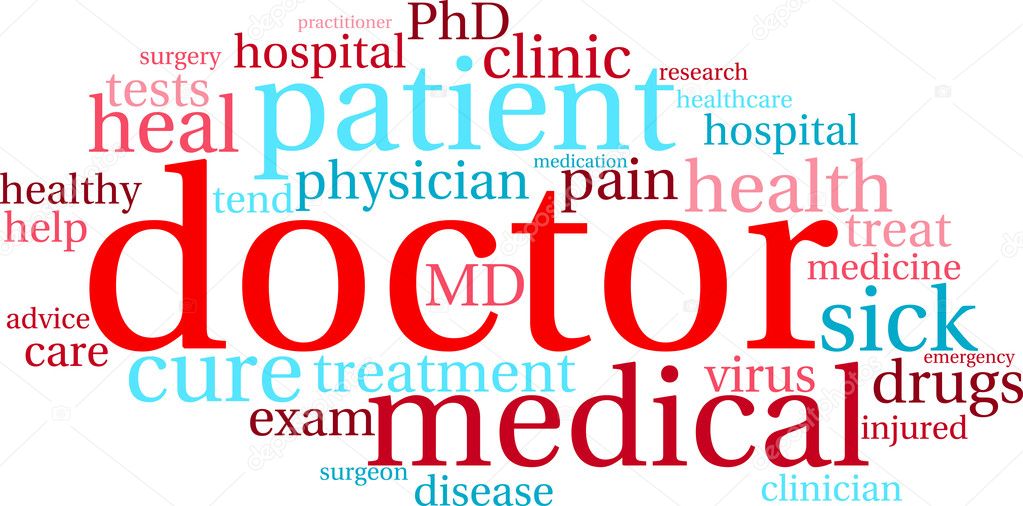
Scientists are also interested in medical slang. For example, the journal “Bulletin of the Tomsk State Pedagogical University” published the scientific work “Ethical Aspects of Medical Slang”.
“The emergence and use of medical slang is due to several factors,” the scientists write. “First of all, this is the stress that doctors face every day when communicating with patients, in situations where it is impossible to make an accurate diagnosis, in the event of a patient’s death, etc.d. “
The use of medical slang “helps to distance oneself from the negative aspects of the work of healthcare providers and to separate oneself from the experiences that patients go through.”
Also, as noted by scientists, “medical slang helps to save time in the oral speech of doctors.
As stated in the work, “the assumption that the use of medical slang may be motivated by the desire to hide information that is not intended for patients, many researchers consider unfounded.”
The fact is that doctors use such expressions only when they communicate with each other, and do not pronounce them in front of patients.
“Nevertheless, a clause on the inadmissibility of using medical slang in communicating with patients is increasingly appearing in the code of conduct for employees of various medical institutions,” the scientists note.
As stated in the work, “in oral informal communication of a medical worker with a medical worker to relieve emotional stress, as well as in situations of saving time, the use of medical slang can be considered, although not entirely appropriate, but justified.”
At the same time, “the ethics of using medical slang is primarily due to the situation, manner, and also the purpose of using slang words and expressions.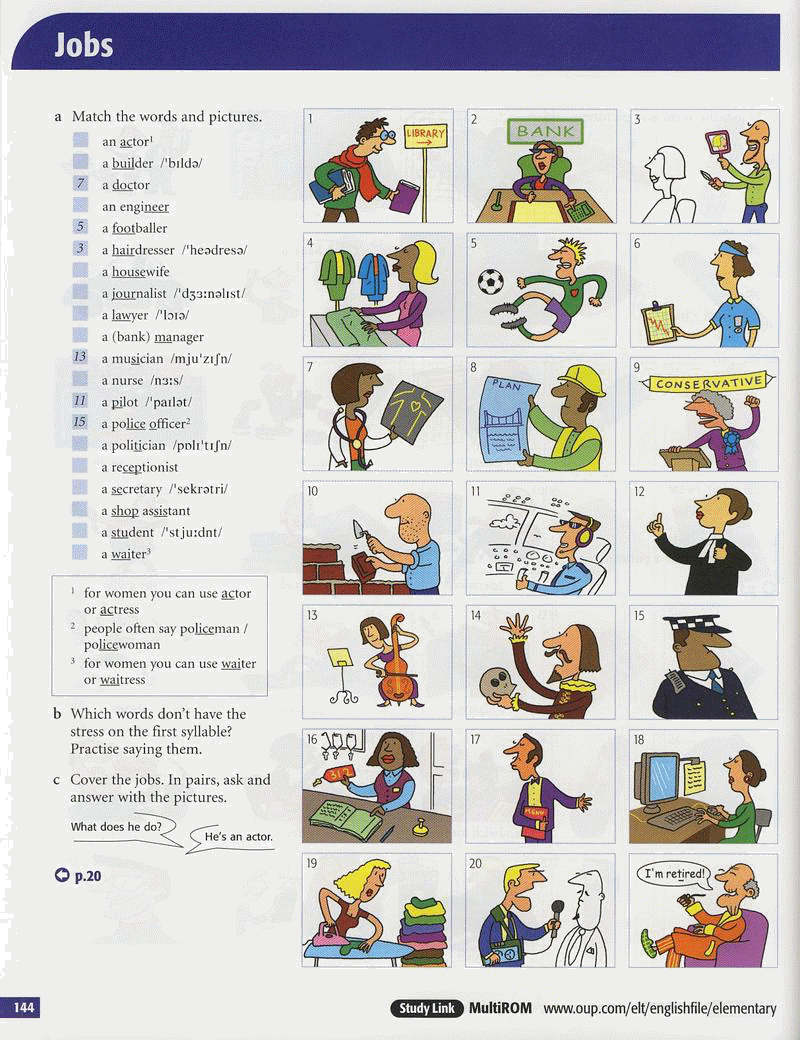
90,000 essential English words and expressions
Image found at blog.doctoroz.com
In life, anything happens and no one is 100 percent insured against diseases. Often we ourselves visit doctors when we feel that something is wrong in the body, or when we need to take a certificate from the hospital ( sick leave ).
Of course, there are people who take particular care of their health and visit doctors regularly, so to speak, for prophylaxis, to make sure everything is in order.
So today we will learn useful words and phrases in English that will be useful to you abroad at the doctor’s appointment.
Below you will find useful vocabulary on the topic “At the doctor’s” in the form of dialogues between the doctor and the patient in English. I think this will make it easier for you to understand and remember the current expressions and phrases in English.
Make an appointment with a doctor
Usually, in order to see a doctor, you must first make an appointment, i.
So, you call or come to the clinic and talk to the girl at the reception.
Patient : I want to see a doctor.
Receptionist : Do you have an appointment?
Patient : Yes, I have an appointment at 3 o’clock.
Patient : No, I would like to make an appointment to see Dr. Brown.
Receptionist : Do you have private medical insurance?
Receptionist : Is it urgent?
Receptionist : Please take a seat.
Receptionist : The doctor is ready to see you now.
Topic article:
11 English idioms with body parts
At the doctor’s appointment: introductory phrases in English
First, the doctor will ask you what is wrong and what you are complaining about, then you will voice your problem or cause of concern.
Doctor : Hello, how can I help you? / What’s the problem?
Patient : I have got a temperature / sore throat / headache etc.
Patient : I have got a pain in my back / chest etc.
Patient : I am asthmatic / diabetic / epileptic etc.
Patient : I am in a lot of pain. / I have been feeling sick.
Patient : I have got diarrhea.
Patient : I have got a lump / swollen ankle, leg etc.
Patient : I need another inhaler / some more insulin / some medicine etc.
Doctor: How long have you been feeling like this? – How long have you been feeling this way?
Doctor : Are you on any sort of medication? – Do you take any medications?
Doctor: Do you have any allergies? – Are you allergic to something?
Patient : I am allergic to antibiotics.
Patient: I need a sick note.
Topic Article:
Medical English Words You Need to Know
On examination by a doctor: possible questions in English
- Can I have a look?
- Where does it hurt?
- Does it hurt when I press here?
- I am going to take your blood pressure / temperature / pulse (measure pressure, temperature, pulse)
- Could you roll up your sleeve?
- Your blood pressure is quite low / normal / high / very high.
- Your temperature is normal / a little high / very high.
- Open your mouth, please.
Topic article:
13 “heart” expressions in English
Doctor’s opinion: advice and treatment
- You need a few stitches.
- I am going to give you an injection.
- You leg / arm etc. is broken. We need to put it in a plaster .
- We need to take an urine sample / a blood sample .
- You need to have a blood test (blood test).
- I am going to prescribe you some antibiotics / a syrup for your cough / a cream for your rash etc. (cream to relieve rash)
- Take two of these pills three times a day.
- Take this prescription to the chemist (pharmacist).
- You should stop smoking / cut down on your drinking / take a rest / lose some weight etc.
- I want to send you for an X-ray.
- I want you to see a specialist. – The doctor gives you a referral to another doctor who specializes in your problem.
That’s all. I wish you good health, as well as perseverance and patience for learning English.
See you soon!
Bye-bye for now!
90,000 12 Russian words that have changed their meaning in the most unexpected way (ass is good)
The Russian language has a rich history.There are cases when Russian words changed their meaning in the most unexpected way: their original meaning could be the opposite of what we are used to.
Bright Side went through the dictionaries of the great and the mighty and chose 17 most striking examples of how the fate of words can be unpredictable.
Freak
Previously, the word had a positive meaning. Initially, this was the name of the first-born male, who later became the head of the family and inherited his father’s house, literally – “the one who stands with the clan.”The freak was endowed with the best qualities and external beauty, so after a while the word began to mean “beautiful.” But along with this, holy people were called “freaks”. Later, this term began to be applied only to those saints who were not of this world – so the word “freak” began to acquire an increasingly negative meaning.
Ass
Hardly anyone expected, but the word “ass” was not a dirty word and meant “inheritance”. Our ancestors thought metaphorically, and the words “front” and “back” were associated with a landmark in time, not in space.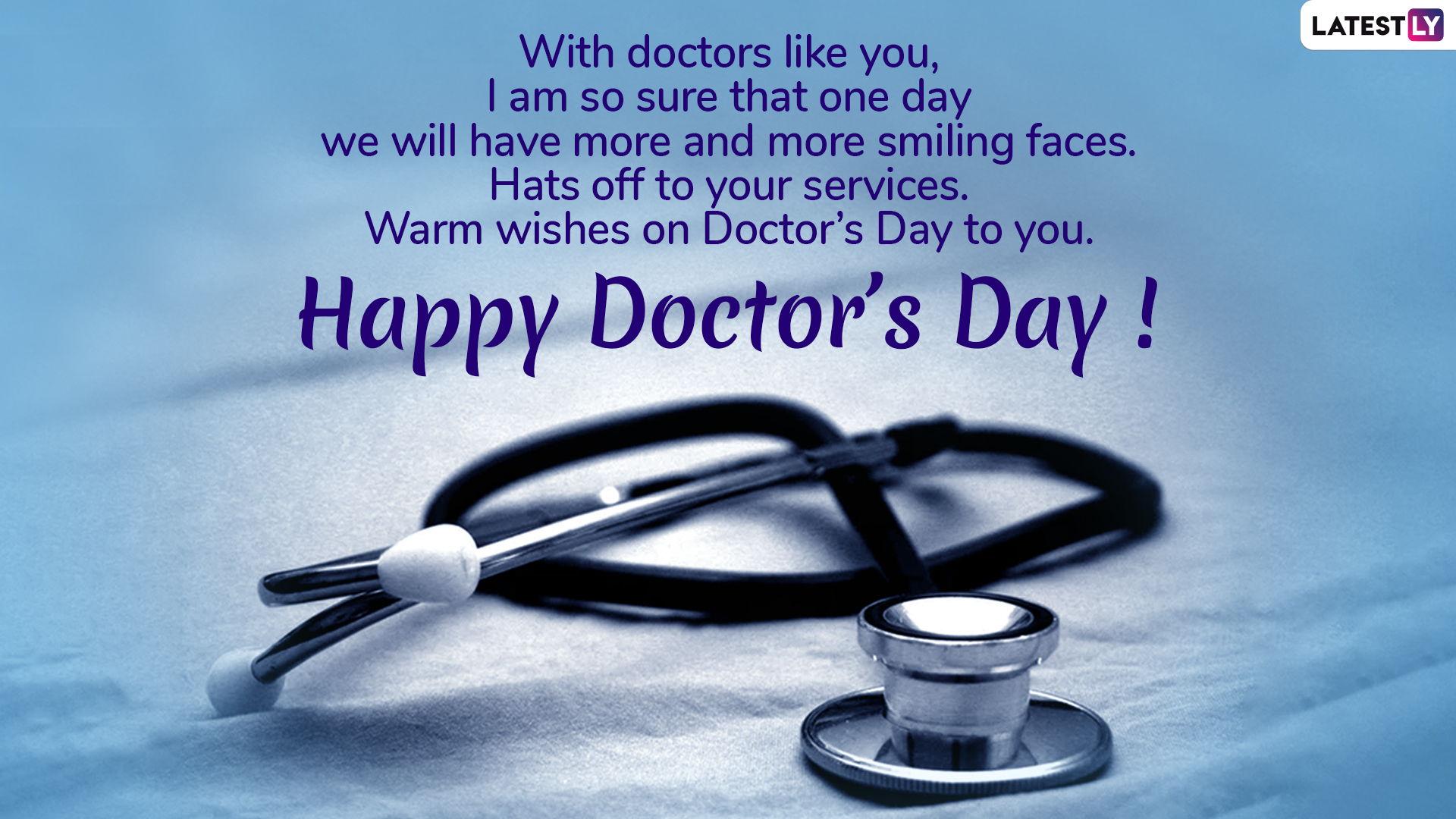
Witch
The word “witch” also previously had a positive meaning and meant a wise woman, literally – “a woman who knows.” Those who practiced light magic were also called. But gradually the word lost its original meaning and became sharply negative.
Scoundrel
Scoundrels a long time ago were called people ignorant, of simple origin. The word was borrowed from the Ukrainian language and was entrenched under the influence of Polish.Although “scoundrel” was not a swear word like it is now, it still had a negative connotation. Because the nobles dubbed the commoners “vile people”, putting some contempt into this expression.
Hotel
Hotel – “big road” in Old Church Slavonic. Merchants – guests traveled along the high road. As a rule, they brought various gifts, which later became known as gifts.
Doctor
Doctor is a respected profession, but the word itself was formed from the word “lie”.
Beauty
A few centuries ago, “beauty” could hardly be called a compliment. The word was formed from the word “flattery” and meant “temptation, seduction, deception.” This concept was associated with evil spirits: “seduction by evil spirits”, “devilish temptation.” And since the devil in the representations of people captivated, as a rule, with pleasures and beautiful visions, then alluring and beautiful things gradually began to be called adorable.This is how the word acquired a positive meaning.
Sale
Sale was a penalty for any crime other than murder. The guilty person paid for the sale to the prince, atoning for his atrocity. Over time, this word began to figure in commodity-money relations and acquired a modern meaning.
Week
The word “week” comes from the combination “do nothing”. At first, this was the name of the day off, which we now call Sunday.
Coward
The obsolete meaning of the word is “earthquake”. “Coward” comes from the word “shake”, that’s why they called the vibrations of the Earth, and after that they began to call a person who is shaking with fear.
Bastard
This curse comes from the verb “drag” and meant “bastard garbage somewhere.”After that, they began to call the crowd gathered in one place, and then the people of the lower class – and the word acquired a negative meaning.
Vulnerable
The word comes from the verb “let’s go” and meant earlier “ancient, primordial, that has gone from ancient times.” However, after Peter’s reforms, everything primordially began to be considered bad and the word acquired the meaning of “backward, uncultured”.
Which words surprised you the most?
Illustrator Xenia Shalagina specially for AdMe.
A new word in oncology treatment: Turkish doctors began to use a unique method
Photo: Depositphotos
The rise in the incidence of cancer is forcing scientists to look for new ways of treating this terrible disease. Turkish doctors have begun to use a unique method that will allow them to fight tumors effectively and without side effects, reports NUR.KZ.
Radionuclide therapy has recently been introduced at Anadolu Medical Center, but it is already showing positive results.Anadolu is the representative office of the world famous American clinic Johns Hopkins Medicine in Turkey.
According to a nuclear medicine specialist, associate professor Kezban Berberoglu, during radionuclide therapy, a patient is injected intravenously with a radioactive substance. It accumulates in tumor tissues, attaching to cancer cells.
The substance destroys the tumor from the inside without affecting healthy tissue. This avoids serious side effects and improves quality and life expectancy.
Today, the method is successfully used in the treatment of prostate cancer, tumors of the gastrointestinal tract and pancreas, including at the later stages, when the body already has metastases and traditional methods – chemotherapy and radiotherapy – do not save.
“Radionuclide therapy helps to shrink tumors and metastases until they disappear completely or to the extent that they can be surgically removed. At the same time, pain and other symptoms of oncology decrease, especially in the late stages of cancer, and the patient’s condition improves, ”says Kezban Berberoglu.
The doctor notes that the nuclear medicine department at Anadolu Hospital has extensive experience in using radioactive materials to diagnose diseases, for example, using agents in combination with a radiopharmaceutical.
Seeing that special agents in combination with the drug make it possible to identify a tumor in a particular area with high accuracy, visualize it and choose the right treatment, the doctors decided to introduce the use of radioisotopes not only in diagnostics, but also in therapy.
So, for radionuclide therapy today, two radioactive substances are used to combat oncology – Actinium-225, which has alpha radiation, and Lutetium-177, which has beta radiation. Both of them destroy the DNA of cancer cells, leading to their death, but not affecting the surrounding cells.
“Often we use radionuclide therapy to fight advanced prostate cancer with metastases when standard therapies do not help. At the same time, there are no side effects, so patients continue to live their usual life.This is especially important for older people.
In our practice, there are a lot of patients who come to us for treatment in a wheelchair, but for the second therapy session they come on their own feet, ”says Berberoglu.
Despite the fact that radionuclide therapy is used when traditional methods of fighting cancer do not help, nevertheless, it can be used in conjunction with other methods. The decision is made by a multidisciplinary team of specialists who decide whether to use radioisotope treatment and at what stage to administer them.
Radionuclide therapy takes about two months and includes 4-6 sessions. The method is safe enough for the patient and those around him, so that he can return home the same or the next day without endangering his loved ones.
Treatment is becoming more and more popular due to its high effectiveness, but its success depends on how correctly the therapy is carried out and the results are monitored. However, the application of this method is limited today due to the small volume of radioisotope production.Therefore, radionuclide therapy is used only in several cancer centers in the world, including the Anadolu clinic.
You can also contact the specialists of the Anadolu Medical Center to get a free consultation regarding your disease and recommended treatment and ask questions of interest using the contacts below or by sending a request using the form below.
The official representative office of Anadolu in Almaty is located at: st. Kazybek bi 117, Galianos business center, 5th floor, office 505.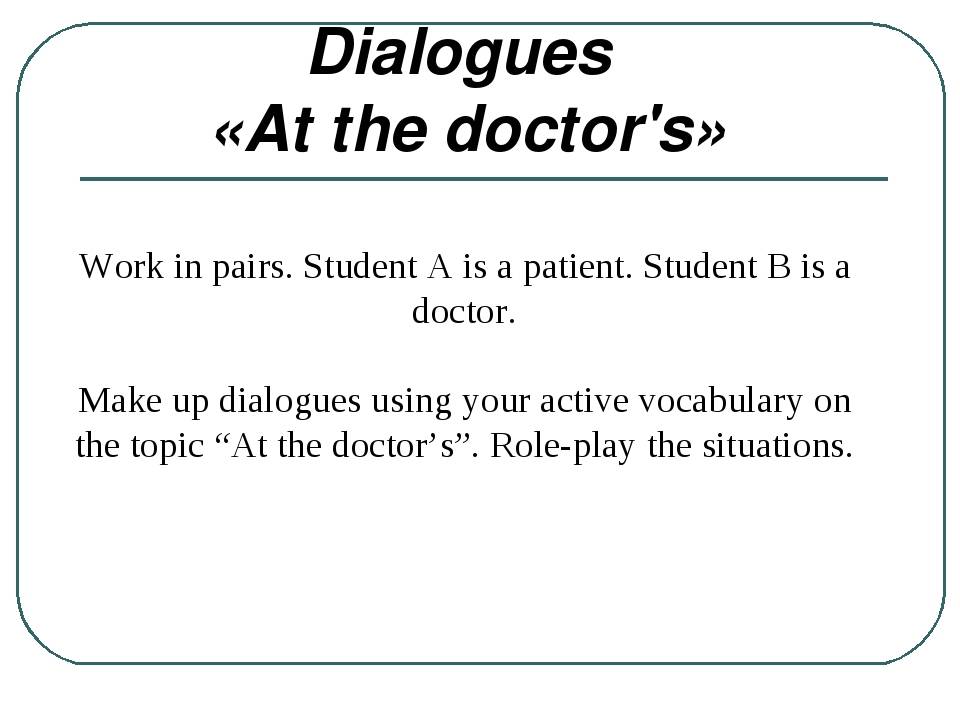
Phones: +7 (727) 338 34 16, +7 (771) 228 08 71, +7 (771) 228 08 70, +7 (771) 78 77 000
e-mail: [email protected]
Website: www.anadolumedicalcenter.ru
Original article: https://www.nur.kz/special-projects/1917950-novoe-slovo-v-lechenii-onkologii-turetskie-vrachi-nachali-ispolzovat-unikalnyy-sposob/
90,000 If the patient does not feel better after talking with the doctor, then this is a bad doctor.
A good doctor always influences the patient’s mental world, looking for words of persuasion.
Doctor, show me “Ahinza”!
Yuri ABAEV, Professor of the Department of Pediatric Surgery, Belarusian State Medical University, Doctor of Medicine Sciences
The rapid introduction of sophisticated medical technology into clinical practice, the number of laboratory and instrumental methods today make it possible to recognize many diseases with such accuracy and reliability, which were previously only dreamed of.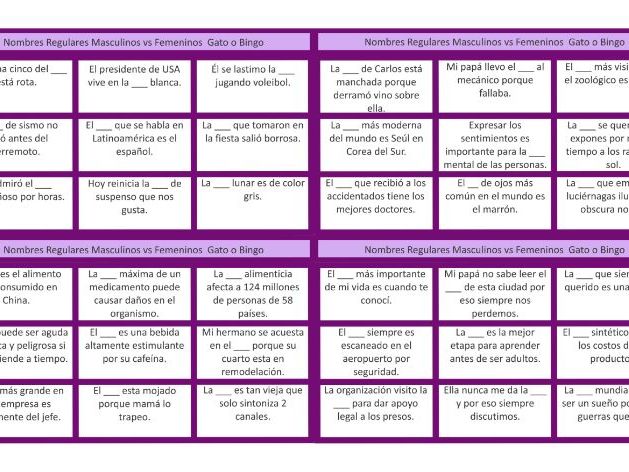
A tempting idea, but if every ailment were only a violation in the human body, and the role of a physician was to find a “breakdown” and fix it! Everything is much more complicated. The disease cannot be considered in isolation from its carrier, without taking into account the psychological characteristics of the patient. Sometimes it is much more important to know what is not on the X-ray, but in the head.
At first it seems to a student of a medical university that an illness is something separate from a person.At the beginning of his career, a young doctor often looks for and sees only a pathological process: inflammation in the lung, stones in the gallbladder, bronchospasm, etc. True, the patient also appears vaguely, but only as a carrier of this spasm. The doctor clearly knows: hypertension is detected – prescribe an antihypertensive agent, and if pneumonia – antibiotics.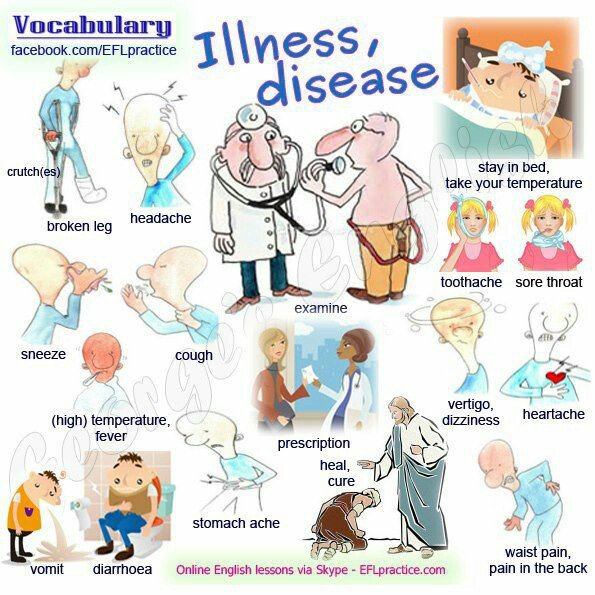
Danish cartoonist Herluf Bidstrup has a drawing of a husband and wife in front of a shop window. The wife notices the details and features of each dress, apart from the price. The husband, on the contrary, pays attention only to the tablets with a tidy sum. Likewise, some doctors see only a damaged heart valve, a stomach ulcer or a trophic ulcer against the pale background of the patient’s figure.
The doctor deals not only with an illness, but also with the patient’s mental reaction to it – fear, depression, despondency, fixation on well-being.A good doctor always influences the mental world of the patient, looking for words of conviction. First, he finds out what kind of person asked for help, what character, what worries, what is expected from a specialist? Sincere communication with the patient (not a set of standard questions) provides valuable observations.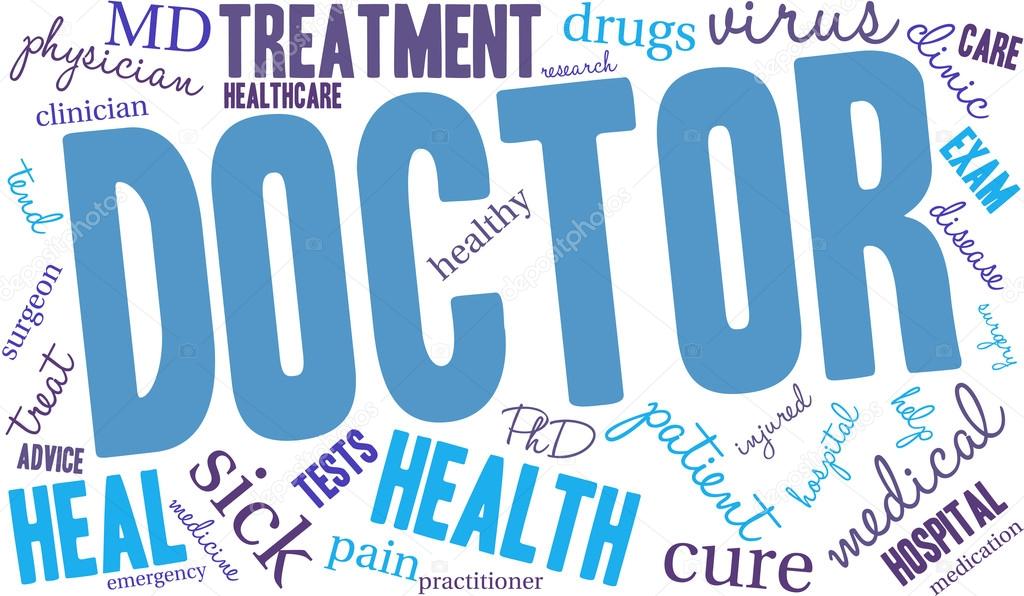
Malaise can be accompanied by painful sensations – acute pain, nausea, heartburn, itching, dizziness, weakness.As a rule, consciousness colors this with emotions (fear, despondency, irritation, etc.). A disturbing imagination paints frightening pictures. His complaints to the doctor are exaggerated, although he does not want to be fooled at all.
VM Bekhterev said: “If the patient does not feel better after talking with the doctor, then this is a bad doctor.” To a novice doctor, this instruction will seem outdated. From his point of view, at a time when medicine had only leeches, klystyra, calomel, emetic powder and bloodletting, the physician had no choice but to comfort and encourage the patient.Now, when medicine has many effective medicines, you just need to heal well, but there is no time to calm down. And does a person tormented by pain need sentiment? Needed! But, having made a diagnosis, the doctor often seeks to write a prescription and forget this visitor.
Any illness necessarily has a psychological component. When the patient sees: the doctor is friendly, calm, attentive, looks straight into the eyes, conducts the examination in good faith, then he feels that he has fallen into good hands, and it will really become easier for him.
Often, fears, the idea of illness in a patient or parents of a feverish child are so absurd that they can be easily dispelled immediately. I recall a case when a 2-year-old baby was hospitalized with a diagnosis of osteomyelitis of the humerus. The mother is excited, answers out of place, in a breaking voice. She needs to be reassured, but her brain will not accept banal phrases like “everything will be fine”. He explained what kind of disease it is, how it is treated, the woman is changing before our eyes: “I thought they would amputate the pen”.
Look in the eyes!
A remarkable 19th century diagnostician and clinician, Grigory Zakharyin, whose name is covered with legends, said: “There is no need to explain what a difficult situation a doctor is in, to whom they do not have confidence; even more difficult is the situation of a patient who has to be treated by a doctor … in whom there is no trust. ” True, he himself had a difficult character. A latecomer or a whiner could have kicked out.
Knowing psychotherapy is important for a representative of any medical specialty, including a surgeon.After all, even the bravest fears the operation. Some consult with an astrologer: what if the stars indicate an unfavorable day? Then the intervention is postponed. The French surgeon R. Lerish said that he, then still a young doctor, was invited to consult the famous Marshal F. Foch. After examination, he advised surgical treatment. Marshal said: “I turned to many medical luminaries, they also offered to be operated, but I did not agree. Now I want you to do this operation, because you are the first who spoke to me, looking straight into my eyes: I believed you. “
One might argue that these psychological subtleties are useless: remove, for example, pain – and emotional layers will immediately disappear. Indeed, when a patient has a bone fracture or intestinal obstruction, quick, purely somatic help is required. But not always, having provided it, you can eliminate the cause of the disease. Alas, today it is not possible to completely rid a person of hypertension, atherosclerosis, rheumatoid arthritis, diabetes mellitus. Chronicles develop neuroses and functional disorders.In such situations, treatment without affecting the psyche will be incomplete.
Consistent medication is often required. It would seem that it is necessary to explain to the patient once and then only write out the next prescription. The doctor is not required to monitor the medication intake. But a doctor who knows psychology well understands that each pill reminds the patient again and again about the illness, so he forgets to take it. A good doctor constantly encourages, charges with optimism, patience, courage.Patients identify such a doctor very quickly.
The patient evaluates the doctor from the first meeting. The result of such an assessment is trust or isolation. But the richer the patient’s story, the more complete the anamnesis, and hence the more accurate the diagnosis. And, I assure you, the treatment results are better. If the doctor accommodates the visitor immediately, he will carefully follow all the instructions. Because the patient initially expects not only pills, injections or surgery. He needs words of encouragement and hope as much as medicines. From the very beginning, he is open to psychotherapy, so every friendly word, attentive look, smile, joke, confident professional gesture fall on fertile soil.When a person sees that they are being taken seriously, it immediately becomes easier for him, even the acuteness of painful sensations weakens.
Battle of psychics
Medicine is permeated with psychotherapy. It is not the doctor who decides whether to apply it or not – the patient himself always gives his activity a psychotherapeutic orientation. It only depends on the specialist how to use this opportunity. He can morally support, and both parties will be happy with the result. If the doctor believes that his business is to treat only the disease, without delving into the patient’s experiences, he also deals with psychotherapy, only negative.In response to dryness, unceremoniousness (or even rudeness), a person disappointedly “withdraws into himself”, loses confidence in medicine, the diligence necessary to carry out appointments.
It happens that she is completely discouraged, quits treatment or seeks help from healers, charlatans. They already satisfy his need for psychotherapy in full. The amazing results sometimes achieved by outright ignoramuses once again prove the importance of the psychological factor. All clinical trials of new drugs collide with the placebo effect.In any group there are people who react positively not to a remedy, but to an indifferent substance offered under its guise for control. Although the organic component of the disease is expressed in them no less than in others, the psychological component is especially high. Soulless prescriptions leave only disappointment, the patient looks for a “healer” and gets in full what the official medicine did not give him. The well-known psychiatrist IM Balinsky noted: “The medicine that is most often used in everyday practice is the doctor himself.In other words, not only the bottle of medicine or the box of pills is important, but also the manner in which the doctor prescribes them to the patient, and even the atmosphere in which the medicine is prescribed and taken. ”
When you read the old medical literature, you involuntarily smile: from the modern point of view, cherry laurel drops seem to be a dummy. Nevertheless, remarkable doctors achieved amazing success in healing, having at their disposal only theirs or musk, arsenic, opium, emetic, calomel; doing bloodletting.Undoubtedly, the therapeutic effect was achieved thanks to psychotherapy, the influence of one’s psychic energy, the ability to “dissolve” in a sick person. These were the doctors who left their mark on the history of medicine – M. Ya.Mudrov, N.I. Pirogov, G.A. Zakharyin, S.P.Botkin, Zh.M. Sharko, V.F.Snegirev, A.A. Ostroumov, NF Filatov, VF Voino-Yasenetsky and many others.
The mental world of a patient cannot be seen through a microscope and cannot be evaluated with a computer study. Although scientific progress has allowed us to look into any inaccessible “corner” of the body.But even the most sophisticated devices cannot show the ephemeral soul of the patient. Here our only helpers were and remain the old-fashioned and seemingly irrelevant in the dispassionate anatomy – kindness, compassion, attention and delicacy. It is possible to master knowledge perfectly, to master brilliantly the research technique and medical instruments, but these advantages will shine only when the doctor fosters a sense of tact and the ability to psychologically get closer to the patient. Not gifted with emotional sensitivity, deaf to the patient’s inner life is not able to learn the secrets of healing.
A person is always imbued with sympathy for people who have a property that sounds “ahinza” in Sanskrit. Which means not being able to do harm.
The doctor is obliged to cultivate such a property in himself.
Clinical medicine is of a dual nature. On the one hand, this is science. On the other hand, scientific knowledge is applied not by a robot, but by a person dealing with a suffering patient. For many centuries in medicine, a huge number of diagnostic and treatment methods have been proposed.Some are of only historical interest today. Others argue that knowledge of psychology and the art of communicating with a patient has never grown old. Compassion, attention, readiness to come to the rescue without hesitation were and will remain the basis of healing, no matter how the progress of medicine ran ahead.
Medical Bulletin , December 24, 2009
90,000 from physician assistance to survey studies 9,0001
Machine learning has been successfully used in medicine for many years.In this post, we’ll share how researchers at the Philips developed a neural network-based tool to help physicians collect statistics from electronic patient records and what technologies they used.
Machine learning algorithms are significantly transforming the daily life of a modern person. Many technologies have become habitual that 20-30 years ago were only mentioned in the books of science fiction writers: instant intellectual search on thousands and millions of websites; entertainment services for every taste; recommendation systems that offer products and ads based on our wishes and preferences; voice assistants living in smartphones.
There is another area of human activity, the introduction of smart algorithms into which, perhaps, is not so noticeable from the outside, but it can significantly affect our life. This area is medicine. In particular, AI-assisted analysis of X-ray and CT images, microscopy results, photographs of rashes and neoplasms, etc. is increasingly being used. – and such an analysis can already compete with the conclusions of experienced human diagnosticians. However, most of the accumulated medical information is not images, but text.Therefore, the next breakthrough in the development of medical artificial intelligence can be expected in the field of natural language processing (NLP) and its application to medical data.
Natural language processing is one of the main directions of AI research, in which algorithms are developed for the analysis and “understanding” of texts in human languages.
Researcher of the laboratory Philips Innovation Labs Rus Fedor Mushenok and visiting researcher Philips Research Eindhoven Vadim Liventsev spoke about the analysis of natural languages and their contribution to this area.
Natural Language Processing: How It Works
To process textual information using machine learning, it is necessary to translate human-readable words into a computer language. All modern machine learning algorithms perceive information in the form of vectors – sequences of rational numbers. For example, a sentence of five words can be presented to a computer as a set of five such sequences. The choice of a particular way of encoding words into vectors is one of the key tasks in natural language processing, and many significant advances in this area are associated precisely with the invention of new efficient encoding methods.Here are the most popular ones.
Method 1. Assign an integer value to each word. This is by far the most obvious encoding method. It assumes that you need to compile a dictionary of all the unique words of a certain language and number them in order. Such a dictionary can contain up to tens of thousands of words. Then any word can be represented by a vector, the number of numbers in which is equal to the size of the dictionary. The vector will consist of many zeros and a number of digits representing the index corresponding to the word number in the compiled dictionary.And each sentence will be encoded as a sequence of such vectors.
Despite the seeming obviousness and simplicity, this approach has several serious drawbacks. First, the number of unique words in a natural language is very large. In addition, often the same word can have several forms. For example, in Russian, nouns can be declined, verbs can change endings depending on the number, gender, person and time. As a result, the dictionary, or matrix of words, is very large and difficult for algorithms to process.But there is also a solution to this problem: each word can be reduced to its initial form. For nouns, this is the singular and nominative; for verbs – the infinitive, and so on. This process is called lemmatization and can significantly reduce the size of the dictionary, and therefore simplify calculations.
Another obstacle is the presence of prepositions and conjunctions in languages, as well as some frequently used nouns and verbs. Such words practically do not carry information about the context and can be found in the text of any topic.To simplify text processing, it was proposed to remove the most frequently occurring words from the dictionary. There is also a slightly different approach: calculate for each word a value called TF-IDF (short for term frequency – inverse document frequency). This parameter shows the “specificity” of each word. In other words, the more TF-IDF , the more accurate information about the subject of the text the word contains. So, the preposition “in” will have the small TF-IDF , since it says almost nothing about the context.And for the noun “rocket” this value is much higher: the word immediately indicates with a high probability the space theme of the sentence.
Another disadvantage of this coding method is the impossibility of assessing how close the words are in meaning. For example, the words mug, cup, and glass refer to similar items and are often used interchangeably. At the same time, the vector representation described above does not take into account that in many sentences the word “mug” can be replaced by “glass” without significant distortion of the meaning.
Method 2. We compare words by meaning. The real revolution in natural language processing comes with the idea of embedding ( eng. “embedding”). Word embeddings are their vector representations, created in such a way that words that are close in meaning are encoded with similar vectors. To calculate embeddings, the locality hypothesis is used: words that occur in the same environment have similar meanings. For example, the embeddings of the words “mug”, “cup” and “glass” will be located in the same area of the vector space, since they are close in meaning.
This method also preserves more complex word relationships. So, if in this representation the word “woman” is subtracted from the word “man”, and then the resulting vector is subtracted from the word “king”, then the result obtained will be very close to the word “queen”, that is, “king – man + woman = queen “. In other words, embedding contains the knowledge that if the king is not male but female, then it is the queen. Another illustrative example is the ratio of countries and their capitals: if you subtract the name of its capital from the name of one country, and then subtract the result from the name of the second country, we get the name of the capital of the second country.Representing words as embeddings has a number of advantages. In addition to the fact that they store information about the semantic proximity of words, the dimension of the vectors that encode the words is reduced. This makes it easier for algorithms to process text.
Schematic representation of embeddings of some words and their relationship to each other (source).
One of the basic tasks in natural language processing is the discovery and extraction of keywords and phrases from texts that define the meaning of the entire text.They are called named entities . For medical texts, these can be symptoms (for example, “low-grade fever”, “shortness of breath”), names of drugs and procedures, diagnoses (for example, “ARVI”, “arterial hypertension”). Extracting named entities from text allows medical records to be analyzed and structured.
The complexity of the problem is that in most texts the structure of sentences is not defined in advance, and the same objects or actions can be described in different words (in particular, synonyms).
To solve this problem, the analysis of the hierarchical structure of the proposal is carried out.
An example of building a hierarchical structure of the sentence “The angry bear chased the frightened little squirrel”.
After the entities are extracted and the text is translated into a structured format, the information can be processed using big data technologies.
But the main challenge in extracting named entities is that medical concepts of interest to us are not always mentioned in an affirmative context.For example, in the sentence “No traces of endometriosis found” it is very important to take into account that the diagnosis “endometriosis” is used in negation. And from the sentence “The purpose of this study is to exclude or confirm pneumonia”, no conclusions can be drawn about the presence of pneumonia in a patient. Thus, the task of classifying references to affirmative, negative and indefinite arises. One of the approaches to solving this problem was proposed by the specialists of the laboratory Philips Research .
What problem did Philips solve with embeddings?
Philips is known by many as a manufacturer of household appliances, home appliances and personal care.However, in reality, the main specialization of the company is in healthcare technologies. In particular, Philips develops and manufactures X-ray equipment, computer and magnetic resonance imaging machines, and medical software. The company invests a lot of resources in creating artificial intelligence systems that are designed to help doctors in their difficult work. For example, in a recent study, the specialists Philips described an algorithm based on neural networks that allows you to detect named entities and determine their context in medical texts.With this tool, you can get a table of the patient’s symptoms and diagnoses mentioned in the affirmative context. Laboratory Philips Innovation Labs Rus , which worked on the project, is part of the global network of research laboratories Philips Research and is located in the Skolkovo innovation center.
In fact, the program had to learn to answer the question whether a medical term is used in a sentence, and if so, in what context (positive or negative).This is a fairly general problem, however, in relation to medicine, it was not well solved (there was one attempt, but in this case there was a too small training sample). Let’s give an example: there is a sentence “We suspect that the patient does not have a certain pathology in the chest.” The neural network must classify this statement as a negative reference to pathology. Researchers needed to introduce a third class of statements – speculative statements that say nothing about the presence or absence of the disease, although it is mentioned.For example, it would be speculative to say, “Our goal is to find out if the patient has pneumothorax.” Isolation of this third class made the problem different from the standard one.
The neural networks that were used are trained on labeled data. This means that a category has been specified for each offer. It turned out to be quite difficult to organize such a markup. It was impossible to take the first person who came across on Yandex.Toloka, someone with an understanding of the subject area was needed.As a result, markup turned out to be an expensive and time-consuming procedure, so it was difficult to get a large enough amount of markup data.
“After marking up some of the data by doctors, we created an expert system consisting of a set of recorded rules. With its help, it was possible to understand what type of statement is in the sentence. We applied this system to a different piece of raw data. Then we trained the neural network on the data marked up by the expert system, and retrained it on the data marked up by human experts, ”says Vadim Liventsev, one of the researchers who worked on the project.
“As a result, with a very small amount of manually labeled data, the result was much better than if the researchers used only a neural network or only an expert system. “This is a very fashionable direction now – mixing expert knowledge with AI,” continues Vadim.
The model obtained by the researchers can be scaled, although not with 100% accuracy, for application to other medical records in addition to comments on CT and MRI, for example, to notes on ultrasound results or to work with electronic medical records of patients.But to do this, you will have to slightly supplement the dataset, since radiologists have a rather specific vocabulary (they use a number of professional jargon).
At first, the neural network was trained on the English-language MIMIC-CXR dataset (it can be found in the public domain). This is a set of X-rays, accompanied by textual descriptions written by doctors. When localizing the model (translated into Russian), texts written by doctors over the years were used. Philips works with a large number of hospitals, and some of them were willing to provide data.However, the data had to be collected ethically and used only with the consent of the patients, who had to sign an informed consent agreement. In addition, before working with the data, they were anonymized – they removed clearly spelled names and any information that could help to uniquely identify the patient (for example, the time when the picture was taken, in which hospital the procedure was performed).
A workstation with access to a platform that provides expert analysis of medical images using artificial intelligence tools.
Where can such a tool be used? If a doctor wants to know some statistics on his hospital, for example, in what percentage of cases a certain disease gives a complication, he can form a request to the system. It will create a database – extract information from texts – and then, using other tools, it will be possible to obtain a summary table of case histories with all the required parameters. With this approach, for each question, you can find out the details, for example, what is the average of people in whom a particular disease gives complications, how many cases of pathology occurs in young or elderly patients.More complex systems, which can be implemented with data in tabular form, are predictive, capable of evaluating a scenario based on the data. For example, what is most likely to happen to this or that patient if nothing is done to him, or if one or another intervention is made.
Another area of application of such a tool is medical research. A huge number of them are held annually all over the world. Some of them are aimed at developing new drugs, others at researching the causes of diseases and finding optimal treatments, etc.e. The result of most of the work is articles and reports published in scientific journals. At the same time, studies can contradict each other due to errors in the planning of experiments, different methods of processing results, bias of researchers and the influence of other unaccounted factors. So, many scientists have studied the effect of coffee on the human body and its health. As a result, some studies have shown that coffee is bad for the heart and stomach, while others claim that it can protect the body from diabetes and cancer.To compose a holistic picture based on a large amount of conflicting information, you need to find and read all available studies, identify the main facts and possible shortcomings of these studies, and why summarize their results. Such a task can become overwhelming for one person or even for a research team: the number of publications is huge, and new ones are published almost every day. This is where natural language processing algorithms come to the rescue again. With the help of the resulting tool, it is possible to extract all named entities corresponding to diseases from a huge amount of research, and then examine a sample of patients with a certain condition, for example, hypertension.And then you can investigate how the course of the disease of different patients relate to each other, under what concomitant conditions the disease is more severe.
***
Artificial intelligence in medicine helps doctors, but not only they, but also each of the patients will feel the positive effect. Ultimately, all such developments are aimed at one thing – improving the quality of medical care. That is why so much attention is paid to the processing of natural languages in medicine.Of course, the efforts of the developers will bear fruit in the near future.
90,000 How to tell a person that he is dying?
- Chrissy Giles
- BBC Future
January 26, 2015
Photo author, Thinkstock
Imagine that this is a man who has very little time to live. How to tell him about it? Correspondent
BBC Future asked doctors how they are handling this difficult conversation.
When I was fourteen years old, my mother said that my father was dying.
My sister and I were sitting on the living room floor. Mom came into the room and said that she needed to talk to us. Preparing for the worst, I stared blankly at the newspaper, at the advertisement for German crystal. His father was diagnosed with pancreatic cancer, the doctors gave him only a few months.
Mom said that Dad would be operated on to relieve pain. As a nurse, she probably knew it was useless, but she also understood who she was talking to.Pancreatic cancer is one of the most insidious. By the time a person begins to notice nausea, jaundice and weight loss, nothing can be helped.
That evening, judging by the entry in my diary, I could only think about my feelings. Now, rereading those lines, I reflect on what my mother felt – she herself had not yet recovered from the terrible news, and she had to tell it to us all.
How to tell a person that he or someone close to him is dying? Doctors are constantly faced with this question.I decided to find out what they themselves can say about it: how they choose their words, what, according to their experience, cannot be said and what such conversations cost them.
Finding a doctor who, in simple human language, without many incomprehensible words, could tell me about what it is like to tell your patients terrible diagnoses every day turned out to be a difficult task. There are enough doctors willing to share their experience, and conversations with them start promisingly. However, at some point, a kind of professional filter is triggered – my interlocutor begins to speak less intelligibly and less concretely, sprinkle with medical terms, hide behind passive constructions or generalize the experience of “doctors in general”.“It can be depressing, but …”
Photo author, Thinkstock
Photo caption,
Telling a person that he has a terminal illness is not a routine task.
Dr. Kate Granger does not have such barriers. She often has to give bad news and talk about death. But she has a special reason for her interest in this topic. Three years ago, when she was twenty-nine, she was diagnosed with a very rare and incurable cancer that affects soft tissues.She talked and wrote a lot about how she lives with this deadly disease. She launched the #hellomynameis (“Hello, my name is …”) campaign on social media, encouraging public health officials in the UK to share their name with every patient. She plans to cover her own death on Twitter in real time.
Granger was diagnosed while vacationing in the United States. “When I came back to the UK, I had to go through some tough episodes of bad news reporting,” she says.- When the results of the MRI came, they were told to me by a junior doctor who had no idea about the treatment plan. There was no one close to me at that moment. “
Approaching death
She was alone and in severe pain when she was informed without warning that, according to the MRI, she had metastases.” essentially sentenced me to death. It was clear that he was impatient to leave, and I never saw him again. ”
This experience had a great influence on her as a doctor.“I think I was quite a compassionate and kind doctor, but after going through all this and returning to work, I began to understand much better, for example, what the meaning of gestures is, and began to think about how terrible news would affect a person, instead of to perceive the need to “tell Mrs. Smith that she has lung cancer” as just another routine. ”
Another doctor recalls a woman who was admitted to the hospital shortly after Christmas. Before that, for about nine months, she periodically went to the doctor, complaining of general symptoms that are often overlooked: fatigue, bloating.Then she suddenly developed jaundice and shortness of breath and was brought to the emergency room by a relative.
According to the doctor, this was one of those situations when it immediately becomes clear that something is wrong. “It is very rare to feel a sore spot and immediately determine that it is cancer.” Examining the patient, the doctor drew attention to the fact that her abdominal cavity is “hard as a stone.”
“She kept asking: ‘But everything will be fine, won’t it?’, And I answered: ‘We will do everything we can, just let’s take tests and find out what is happening to you.’At this stage, I understood that things were bad, but what exactly was bad – I did not know yet. The woman really wanted to return home by the New Year to call her relatives abroad, but when the blood tests were ready, it became clear that she would have to stay in the hospital. She asked: ‘Tell me what is the most pessimistic forecast’. I looked at her, she looked at me. I thought that she was not ready for this diagnosis. But then her relative intervened and explained: “No, no, she means how long she will have to stay in the hospital in the worst case.”At such a moment, you realize that we all know perfectly well what we are talking about, we just accept this reality to varying degrees. ”
Preparing for the end
hospital examination room, they will soon find out about this. ”A4 sheet is attached to the door with plasticine with the inscription:” The room is booked for the whole day to report bad news. “
” These are living people. They cry, scream, “the doctor explains to his students.The atmosphere in the room is tense, nervous chuckles are heard. The people the doctor is talking about are actually two actors invited to rehearse various scenarios with students who will become doctors in a year.
Author of the photo, Getty
Caption to the photo,
The doctor can be scared too
Naturally, future doctors have many reasons for concern: should they touch patients; what if they can’t cope with emotions or say the wrong thing, or don’t say what needs to be said, or don’t say anything at all …
Students are given assignments, and they hastily scan the sheets of paper.Someone gasps, someone shrinks in horror. One of the tasks is to tell the parents that their son has a suspicion of schizophrenia. Another is to report the unexpected death of a relative in the hospital. Looking at a neighbor’s paper, one of the students shakes his head: “Yes-ah, no luck!”
The neighbor is heading for the door – it’s his turn. The teacher suggests: “Maybe you should take handkerchiefs with you?” “Yes, for myself,” the young man replies. His fellow students sit on plastic chairs arranged in a semicircle in front of the screen and watch the video feed from the scary room.They involuntarily touch the face, take a protective pose, crossing their arms over their chest. The unhappy student begins to speak in a choked voice.
Moment of Truth
A married couple is sitting in the room. The woman keeps turning her purse in her hands, not wanting to believe what she has heard. The man silently looks at his hands, clutching his mobile phone. “Is that true, or is that what you think?” he suddenly asks the young doctor aggressively. They had just been told that their 26-week premature baby had severe brain damage and was unlikely to survive.
Students cast sidelong glances at each other, shake their heads, smile, frown – they all understand what torment their colleague is going through now. Sooner or later, all of them will have to experience this torment.
Scientists from the Aristotle University (Greece) have established, perhaps, not such an unexpected fact: telling a patient (even in a classroom situation) that he has cancer is much more stressful for a doctor than hiding the truth. According to the researchers, those doctors who do not tell the patient the diagnosis, perhaps, are trying to control the situation in this way and not allow an overly emotional reaction in the patient and in himself.
According to Laura-Jane Smith, a resident of the pulmonology department at a London clinic, due to the stress of breaking news, some doctors sometimes postpone the conversation with the patient or give him the wrong diagnosis.
It can be difficult to find the right moment to discuss topics such as the future course of a disease, and patients may respond differently to a message. “Some people want to talk as soon as they realize they are sick.Some insist: ‘I have been to the hospital before, I strongly oppose being transferred [to the intensive care unit], “says Smith. Some just do not want to know what is happening to them.
Alternative
In addition There is a danger of aggression against the doctor who reported the sad news.Katherine Slimane, physician and professor at King’s College London (UK), notes that studies have shown that patients find it more pleasant to communicate with those doctors who give more optimistic prognosis of palliative outcomes ( non-curative) chemotherapy.”It turns out that a doctor can tell a patient that his illness is incurable, only at the cost of a relationship with him. It’s amazing,” she says.
The requirements that patients and their family members place on doctors are to find a balance between frankness, truth and hope; treat the sick humanly, but do not show the weaknesses inherent in a person; to know everything, even what nobody knows, aggravates the stressful state of doctors.
Photo author, Thinkstock
Photo caption,
An optimistic doctor is, of course, nice.But does it make sense?
“I think it’s hard for us to admit that we don’t know something,” says Stephen Barkley, who conducts palliative care research at the University of Cambridge, UK, “because patients approach us as capable people. conduct an examination, make a decision, diagnose and prescribe treatment, and we try to fit this image. ”
He believes that from an emotional point of view it is difficult for doctors to recognize the presence of uncertainty, which stems not from a lack of their professional competence, but from the inability of accurate predictions in medicine, especially in the later stages of many diseases.”It’s scary. Nobody enjoys talking like that,” he says.
When patients and their families are told about a terminal illness, many of them want to find out everything about it: what treatment methods exist, is there a chance to recover, how long the patient will last. But the answers to these questions are not always available.
The studies performed are often not large enough or outdated, or it turns out that they were conducted among completely different groups of patients, and their results are difficult to apply to this person.
Certainty can be very little – at the very moment when people need it most.
Departure date
“How much do I have left?” – this question doctors are afraid of most. None of the doctors I have spoken to give the patient specific dates, preferring to say that it is a matter of years, months, weeks or days.
It has long been known that judging the course of a disease is a thankless task. If, for example, at the final stage of the development of a malignant tumor, it is still possible to somehow estimate the remaining life of a patient, then it can be very difficult to understand how long a person suffering from senile weakness, dementia or chronic lung disease will live.
Overall, doctors usually overestimate the life expectancy of terminally ill patients by more than five times, and patients die much earlier than expected.
Stephen Barkley never gives patients specific dates and teaches this to his students: “I tell students very firmly not to give any exact dates, because often there is simply no such information,” he says. “And even if there is such information , this is the average, and by definition 50% of patients will live longer and 50% will live less. “
Photo author, Thinkstock
Photo caption,
Support from a doctor can be expressed in many ways, including in correctly chosen words.
Setting an “expiration date” for patients is not only almost impossible, but sometimes harmful. “I have had patients who were told that they would live six months, and when six months passed, they waited for death from day to day. And if they ended up living much longer, it was very difficult,” says Barkley. Conversely, if it is obvious that the disease is progressing much faster, then the presence of a certain date may give the patient unreasonable hope.
Laura-Jane Smith agrees that the choice of words must be very careful. “From conversations with patients, I realized that they never forget this conversation and very often remember it word for word,” she notes. “If you try to embellish reality and avoid words and phrases such as’ cancer ‘,’ incurable ‘and’ life threat ‘, you can fall into the trap. Over time, I began to try to speak as clearly as possible, although, of course, not harshly. In my opinion, it is much more productive. “
Individual words are important. Elena Semino and her colleagues from Lancaster University (UK) are researching linguistic means of expressing end-of-life information. They collected 1.5 million words of material from online conversations and forums where patients, caregivers and healthcare professionals interact.
Violent or war metaphors (“fight the disease,” “keep fighting!”) Can be disheartening to people with cancer because they require constant effort or imply that the deterioration is a personal failure of the patient.But in other contexts, they can inspire a person, help express determination or solidarity, or bring back a sense of purpose, pride, and individuality.
“You don’t have to be a linguist to understand what metaphors a patient uses,” Semino is convinced. Physicians should consider whether these metaphors are helpful at this stage. Do they help the patient, do they give him a sense of meaning, purpose, his own individuality? Or, on the contrary, exacerbate anxiety?
Delayed death
Patients have the right to know what awaits them, but they also have the right not to know it.Stephen Barkley and a team of researchers have explored the timing of talking about approaching death with patients with conditions such as heart failure, dementia and chronic obstructive pulmonary disease. “Many patients do not seem to want frank conversations at an early stage, and some do not want such conversations at all,” he notes. Barkley warns that in striving for the so-called “professional cleanliness” – the immediate and frank notification of patients that their lives are coming to an end, the doctor sometimes thinks more about himself than about the interests of the patient.
Although patients and their families may delay or avoid direct conversation about death, they do not always act for self-preservation. According to the results of a study of more than 1,200 patients with an incurable malignant tumor, it was found that those with whom such interviews were conducted at an early stage (in this case, “early stage” is defined as more than thirty days before the expected date of death), in the last days and fewer weeks of their life needed “aggressive therapy”, including chemotherapy in the past two weeks, and emergency care in a hospital or in an intensive care unit over the past month.
Photo author, Thinkstock
Photo caption,
The end of life is even more important than its beginning
Correctly informing the patient about the real state of affairs can even strengthen hope. Slimane cites a small study of patients with end-stage kidney disease as an example. Scientists have found that giving a patient more information about the course of the disease early can reinforce hope, rather than destroy it. “When the patient is informed of the prognosis of the course of the disease, new threats are identified, but instead of destroying hope, it gives him the opportunity to revise his expectations in accordance with the forecasts,” they write.
Conversely, unrealistic expectations prevent the patient from properly managing the remaining time. Barkley recalls a patient with advanced cancer who reported that his family planned to take him six months later to an expensive seaside resort and arrange a party for him. The doctor suggested organizing the holiday earlier and spending it at home in the UK. “They listened to my words and threw a party the next month without leaving the country. They had a great time.” The patient died two months later.
… 21 years have passed since the day when my dad was diagnosed with a terrible diagnosis, but my mother clearly remembers his reaction. “Dad turned to me and said, ‘Well, I have lived a good and very happy life,” she recalls.
Everyone comes into contact with medical terminology at some point in their lives, whether during their own visits to the doctor or reading a medical document or report. It’s safe to say that this language can be difficult to understand, almost sounding like a foreign language.
The truth is, like all specialised terminology, medical terminology has a system. That is, once you grasp the basic framework, it becomes much easier to understand exactly what a term is referring to – no matter how complicated it looks.
The purpose of this article is to break down medical terminology so that you can begin to understand it. Whether or not you are a medical student, this article will give you a solid introduction to the topic.
DEFINITION OF MEDICAL TERMINOLOGY
What is medical terminology? Medical terminology is the vocabulary of the medical profession. It’s the specialised language of Western medicine, used to describe everything from the human body – its parts, processes, functions, dysfunctions and diseases – to all the medical procedures, interventions and pharmaceutical treatments. It’s basically the common language medical professionals use to quickly understand each other.
In language, morphology refers to how words are formed and relate to other words. The morphology of medical language works quite simply. Words are formed by combining different base elements, usually from Latin, to accurately describe any possible conditions of the human body. These elements are prefixes, root words, combining vowels and suffixes, of which each term will be a combination.
The prefix is placed at the start of a word to modify its meaning.
The root is the main part of the word.
The suffix is placed at the end of the root, also to modify the meaning.
For example, the word Gastroenteritis can be broken down into a prefix ‘gastro’, a root word ‘enter’, and a suffix ‘itis’:
Gastro – stomach
Enter – intestines
Itis – Inflammation
Through this breakdown, we can understand that Gastroenteritis means inflammation of the stomach and small intestine.
Doctors and medical health professionals also make use of abbreviations to quickly communicate information. Have you ever noticed your doctor scribble something down after your consultation, only to find you can’t make sense of their notes? Well – abbreviations and acronyms are commonly used as shorthand, either for instructions on prescribed medication, to describe test results, or to quickly refer to medical conditions or parts of the body.

LIST OF COMMON TERMS
Medical terminology is quite vast, but we’ve listed some of the most common medical terminology prefixes, suffixes root words and abbreviations for you below. These alone will help you interpret hundreds of medical terms.
Prefixes
a(n) absence of
ante before
anti against
aut(o) self
bi, bis double, twice, two
brachy short
brady slow
circum around, about
contra against, counter
dorsi back
dys bad, faulty, abnormal
end(o) inside
epi outer, superficial, upon
eu normal
extra outside
hemi half
hyper excessive, high
hypo deficient, low
infra beneath
inter among, between
intra inside
mal bad, abnormal
megal(o) large
peri around
poly much, many
post after
pseud(o) false
supra above
tachy fast, quick
Root Words
acou, acu hear
aden(o) gland
aer(o) air
alges(o) pain
andr(o) male
angi(o) vessel
ankyl(o) crooked, curved
anter(i) front, forward
arteri(o) artery
arthr(o) joint
articul joint
ather(o) fatty
audi(o) hearing
aur(i) ear
bucc(o) cheek
carcin(o) cancer
cardi(o) heart
cephal(o) head
cerebr(o) brain
cervic neck
chol(e) bile, or referring to gall-bladder
chondr(o) cartilage
corpor body
cost(o) rib
crani(o) skull
cry(o) cold
cut skin
cyan(o) blue
cyst(o) bladder
cyt(o) cell
dactyl(o) finger or toe
dent tooth
derm(ato) skin
dipl(o) double
dors back
encephal(o) brain
enter(o) intestine
erythr(o) red
gastr(o) stomach
gloss(o) tongue
glyc(o) sweet, or referring to glucose
gyn woman
hem(ato) blood
hepat(o) liver
hist(o) tissue
hydr(o) water
hyster(o) uterus
iatr(o) doctor
lact(o) milk
lapar(o) flank, abdomen
latero side
leuk(o) white
lingu(o) tongue
lip(o) fat
mamm(o) breast
mast(o) breast
melan(o) black
mening(o) membranes
my(o) muscle
myc(o) fungus
myel(o) marrow
nas(o) nose
necr(o) death
nephr(o) kidney
neur(o) nerve
nutri nourish
ocul(o) eye
odyn(o) pain
onc(o) tumor
oophor(o) ovaries
ophthalm(o) eye
orchi(o) testes
osse(o) bone
ot(o) ear
path(o) disease
ped(o) child
phag(o) eat, destroy
pharmaco drug
pharyng(o) throat
phleb(o) vein
pneum(ato) breath, air
pneumon(o) lung
pod(o) foot
poster(i) back, behind
presby elder
proct(o) anus
psych(o) mind
pulmon(o) lung
pyel(o) pelvis of kidney
pyr(o) fever, fire
rachi(o) spine
ren(o) kidneys
rhin(o) nose
somat(o) body
spondyl(o) vertebra
steat(o) fat
steth(o) chest
stom mouth, opening
therm(o) heat
thorac(o) chest
thromb(o) clot, lump
tox(i) poison
vas(o) vessel
ven(o) vein
vesic(o) bladder
xer(o) dry
Suffixes
algesia sensitivity to pain
algia pain
derma skin
ectomy excision (removal by cutting)
emia blood
gen become, originate
gram, graph write, record
itis inflammation
lys(is) dissolve
malacia soft
oma tumor
opia vision
opsy examination
osis condition
ostosis condition of bone
pathy disease, emotion
penia deficient, deficiency
peps, pept digest
phob(ia) fear
plasty repair
pleg(ia) paralysis
pnea breathing
poie make, produce
rhag break, burst
rhe flow
sclerosis hardening
scope instrument
scopy examination
sten(o) narrow, compressed
therapy treatment
tomy incision (operation by cutting)
uria urine
Abbreviations
These are just a few of the commonly used medical abbreviations you might come across.
a.c.: Before meals.
a/g ratio: Albumin to globulin ratio.
ACL: Anterior cruciate ligament. Ad lib: At liberty.
AFR: Acute renal failure
ADHD: Attention deficit hyperactivity disorder
b.i.d.: Twice daily.
bld: Blood.
Bandemia: Slang for elevated level of band forms of white blood cells.
Bibasilar: At the bases of both lungs.
BKA: Below the knee amputation.
BP: Blood pressure.
C&S: Culture and sensitivity, performed to detect infection.
C/O: Complaint of. The patient’s expressed concern.
cap: Capsule.
Ca: Cancer; carcinoma.
CABG. Coronary artery bypass graft.
CBC: Complete blood count.
H&H: Hemoglobin and hematocrit.
H&P: History and physical examination.
h.s.: At bedtime. As in taking a medicine at bedtime.
I&D: Incision and drainage.
IBD: Inflammatory bowel disease.
ICD: Implantable cardioverter defibrillator
LCIS: Lobular Carcinoma In Situ.
LBP: Low back pain.
LLQ: Left lower quadrant.
N/V: Nausea or vomiting.
Na: Sodium.
O.D.: Right eye.
O.S.: Left eye.
O.U.: Both eyes.
P: Pulse.
p¯: After meals. As in take two tablets after meals.
p.o.: By mouth. From the Latin terminology per os.
q.d.: Each day. As in taking a medicine daily.
q.i.d.: Four times daily. As in taking a medicine four times daily.
T: Temperature.
T&A: Tonsillectomy and adenoidectomy
t.i.d.: Three times daily. As in taking a medicine three times daily.
tab: Tablet
TAH: Total abdominal hysterectomy
THR: Total hip replacement
SINGULAR TO PLURAL
If you’re confused by a word, it might be because it’s written in plural form. It’s worth getting to grips with the ten rules of singular and plural in medical terminology.
| Rule | Ending | To make plural | Example |
| Rule 1 | Terms that end in “a” | Add “e” | vertebra (singular), vertebrae (plural) |
| Rule 2 | Terms that end in “is” | Change it to “es”. | diagnosis (singular), diagnoses (plural) |
| Rule 3 | Terms that end in “ex” or “ix” | Replace with “ices” | cervix (singular), cervices (plural) |
| Rule 4 | Terms that end in “on” | Replace it with “a” | criterion (singular), criteria (plural) |
| Rule 5 | Terms that end in “um” | Replace it with “a” | bacterium (singular), bacteria (plural) |
| Rule 6 | Terms that end in “us” | Replace it with “i” | bronchus (singular), bronchi (plural) |
| Rule 7 | Terms that end in “itis” | Replace it with “itides”. | arthritis (singular), arthrides (plural) |
| Rule 8 | Terms that end in “nx” | Replace it with “nges”. | phalanx (singular), phalanges (plural) |
| Rule 9 | Terms that end in “y” | Replace it with “ies”. | therapy (singular), therapies (plural) |
| Rule 10 | Terms that end in “x” | Replace it with “ces” | thorax (singular), thoraces (plural) |
MEDICAL TERMINOLOGY BOOKS AND DICTIONARIES
There is definitely no shortage of books on the subject of medical terminology. Here is a handful of the most popular books available to buy:
For Everyday Use
Medical Terminology: A Short Course by Davi-Ellen Chabner
Oxford Concise Medical Dictionary by Elizabeth Martin
For Students and Professionals
The Language of Medicine, 11th Edition by Davi-Ellen Chabner
Medical Terminology: The Best and Most Effective Way to Memorize, Pronounce and Understand Medical Terms by David Andersson
Medical Terminology for Health Professions by Ann Ehrlich
MeDRA or the Medical Dictionary for Regulatory Activities is an internationally recognised resource, used specifically in the pharmaceutical industry. It’s available in an array of languages including English, Japanese, French, Russian, and Chinese.
HISTORY AND CONTEXT OF MEDICAL TERMINOLOGY
It’s probably obvious to you by the way it sounds, that medical terminology finds its origins in ancient Latin and Greek. According to the National Institutes of Health, the oldest recorded medical writings are those of the ancient Greek Hippocrates, also called the ‘father of medicine’, dating back to the 5th century BC. Another significant figure whose writing are still used was the Greek doctor Galen. When Rome conquered Greece, both cultures and languages merged and from this came new terminology for medical concepts and treatment. All of this was written by hand and passed down through history.
During the Renaissance, many Latin words were used to describe the human body. Apart from Greek and Latin, numerous other languages have made their contributions to medical terminology over time, including Arabic, Chinese, Gaelic, Dutch, Italian, German, French and Spanish.
CONCLUSION
Medical terminology is initially confusing, but with a bit of patience you’ll quickly become familiar with the way it works and what even the most complex words are referring you. This knowledge is useful for understanding some of the most common ailments that you may well experience in your lifetime, or if you’re working with medical texts.
The medical language we inherited from ancient civilisations is still in use today. Prefixes, root words and suffixes, that form the basis of all medical words, usually find their origin in ancient Greek and Latin.
There are many online and offline resources for understanding medical terminology – from general guides to use at home covering basic medical terminology, to industry-recognised books and dictionaries for practitioners and medical professionals. Among the options we’ve listed here, you should find something that fits your needs.
If you need help with Medical translations, we offer professional services within the fields of Medicine and Medical Technology. Contact us to book a free consultation.
Was this article helpful?
YesNo
Medicine clearly has its own language, and understanding medical terminology lays a great foundation for practicing in any allied healthcare field.
Mastering this language is a complex task, but with the appropriate learning resources, valuable tricks, and dedication, there’s no reason why you can’t learn medical terminology quickly and effectively.
Use a Medical Dictionary to Look Up Medical Terms
Using an online medical dictionary is a fantastic way to enrich your understanding of meanings and use of medical terms. If a word is tripping you up, see where it’s derived from and how it’s pronounced. Is it used outside of the medical world? Can it be used as a verb or a noun?
Make or Use Flashcards to Learn Medical Terms
Science has discovered that people remember more when they write things down, which makes creating flashcards a great technique. If you’re trying to remember a term with a visual clue, why not use that on one side? If you simply want to test your current knowledge, use learning sites like Quizlet. Either way, repetition is your best course of action for building a robust mental list of medical terms.
Play Medical Terminology Games
There are a variety of online medical terminology games that can help you memorize your vocabulary words. Multiple choice, memory, and matching games shake things up a bit when things start to feel a bit overwhelming.
Nowadays, there are plenty of Android and iPhone medical apps that are designed exclusively for future healthcare workers.
Get Ahead in Your Future Allied Healthcare Career
Are you an allied healthcare student or considering a medical career? We’ve compiled a comprehensive list of the medical terminology guides, classes, and books that will take your education to the next level.
Would you like to explore even more ways to make learning more enjoyable? Check out these medical YouTube channels and stay tuned to the latest news in the medical field.


